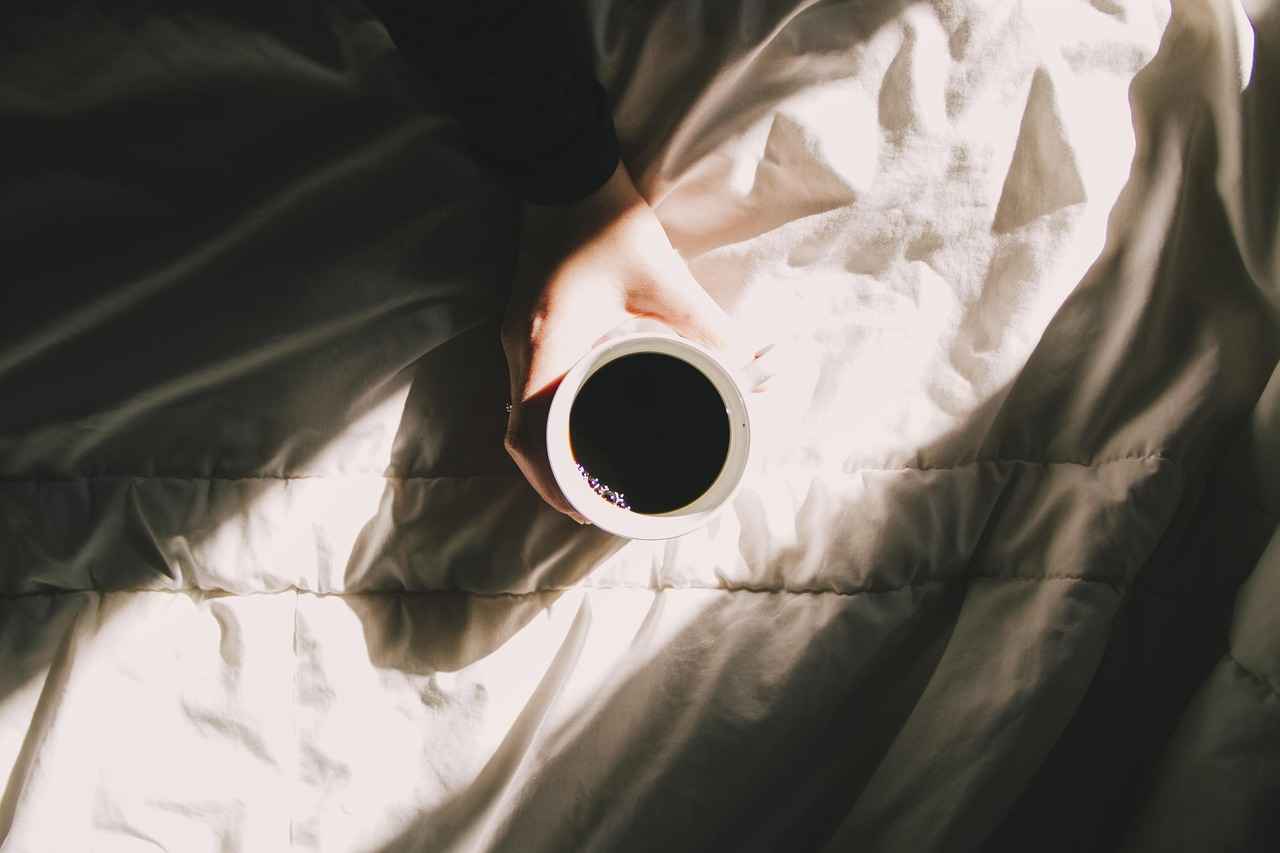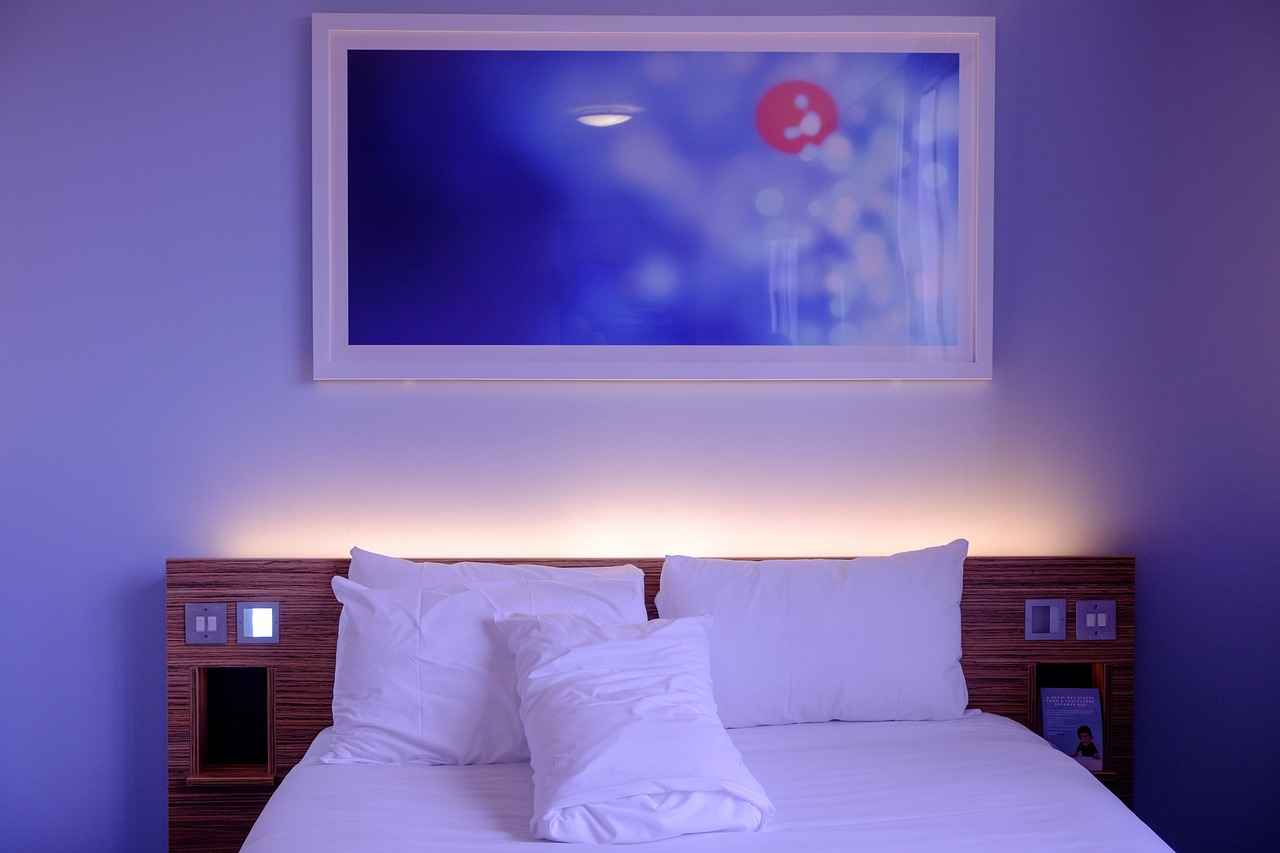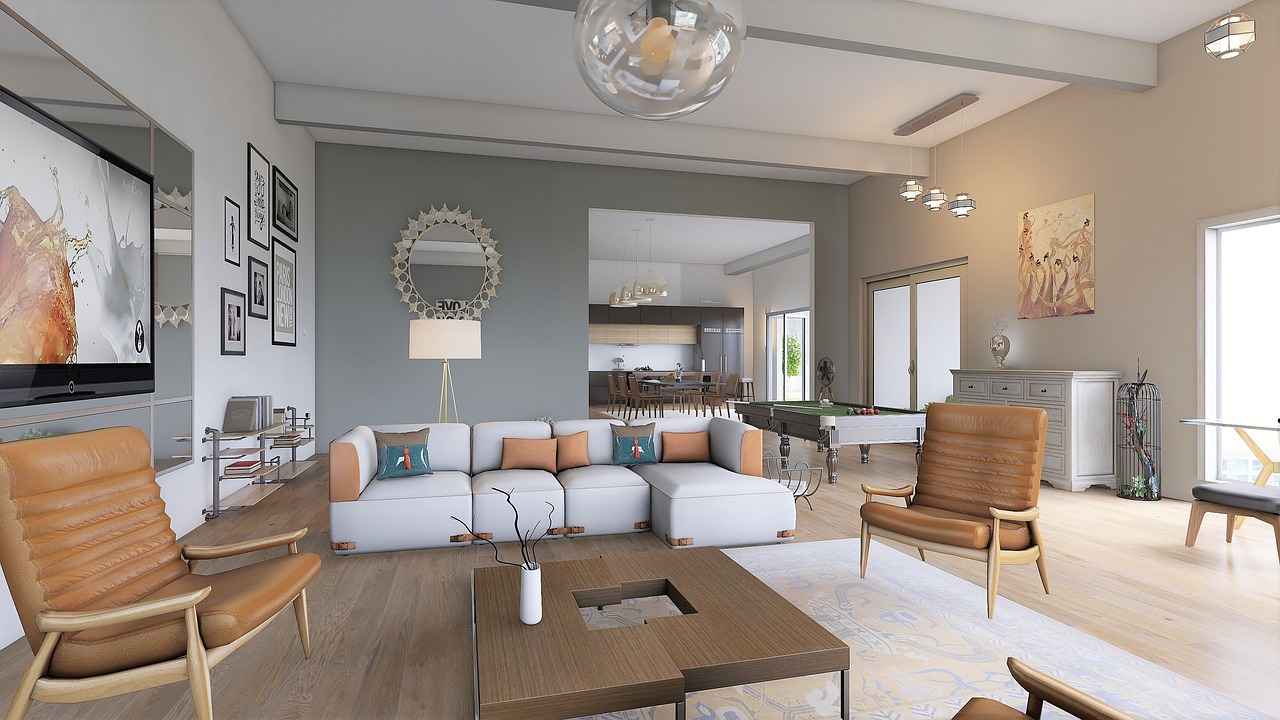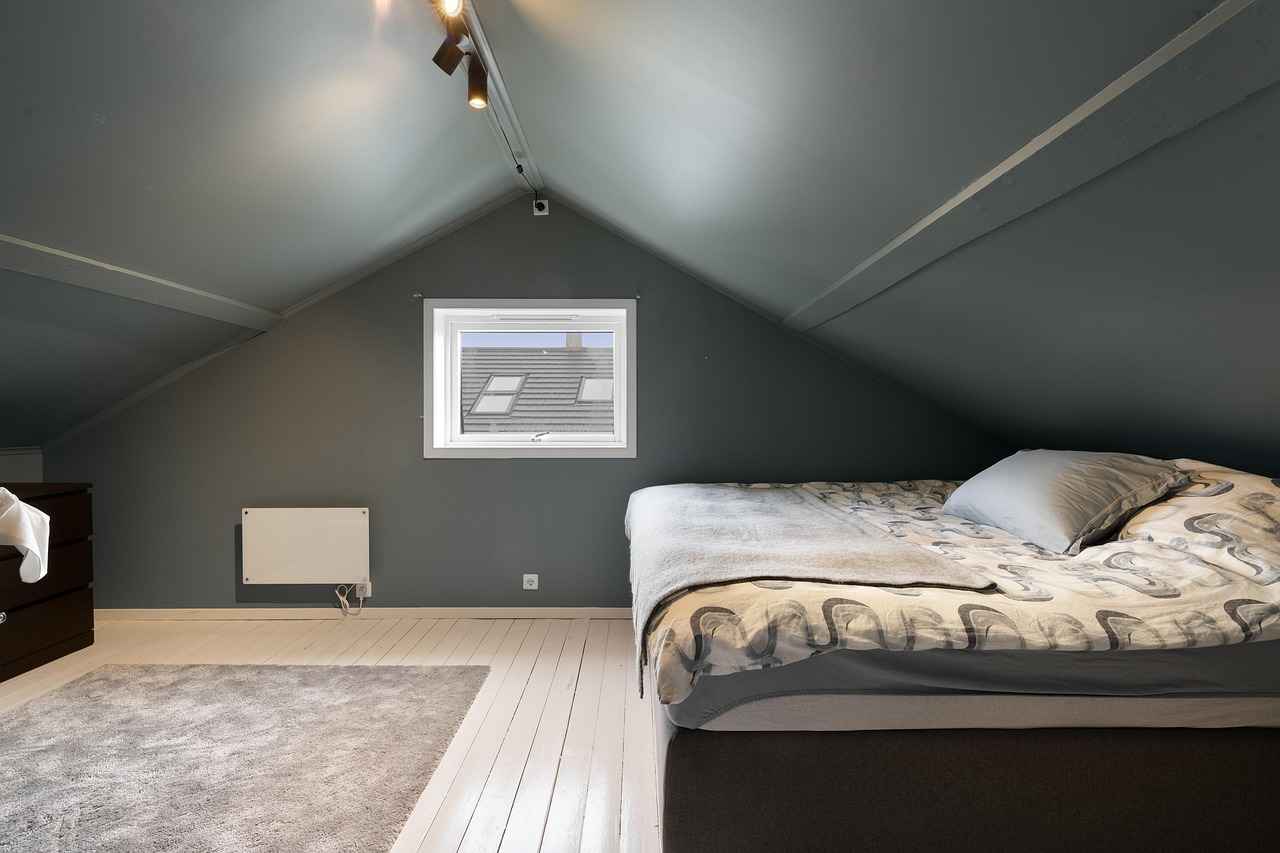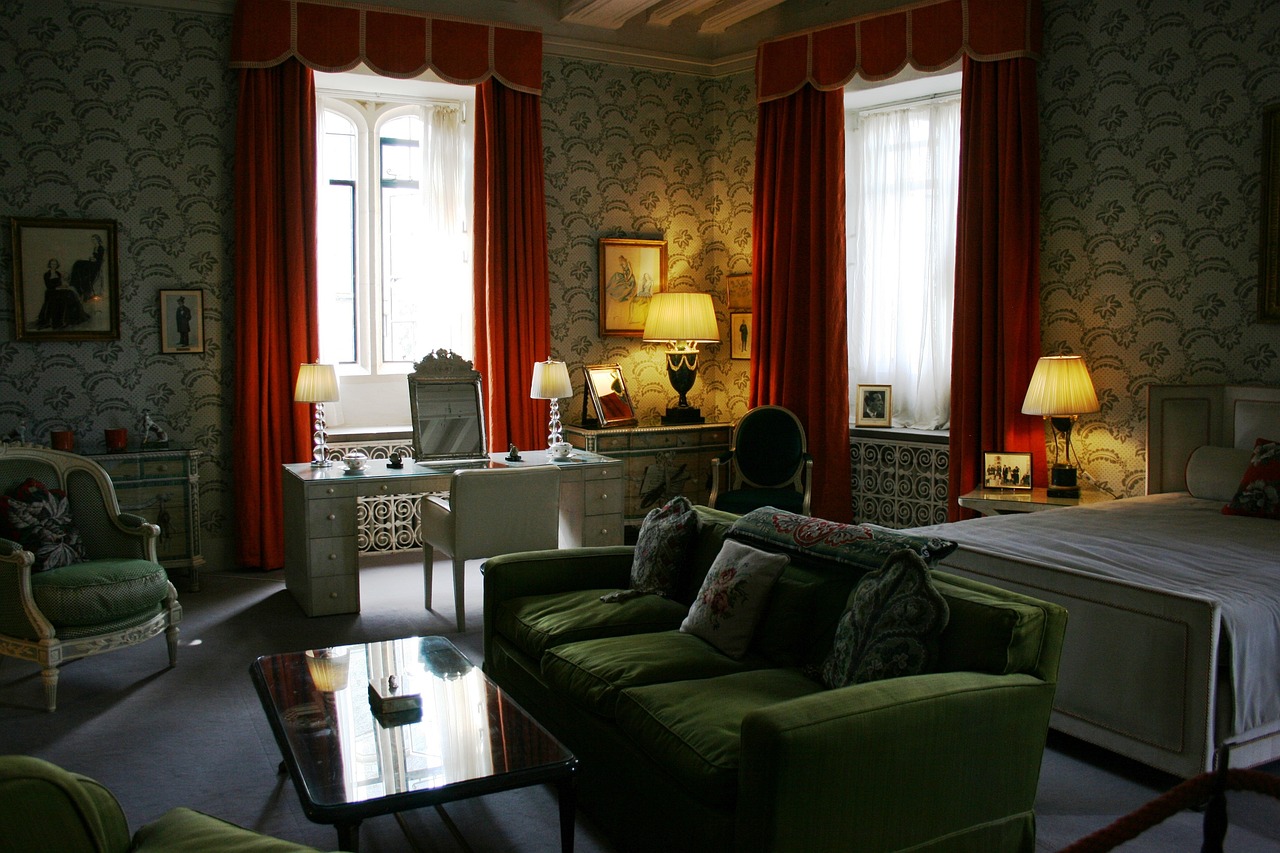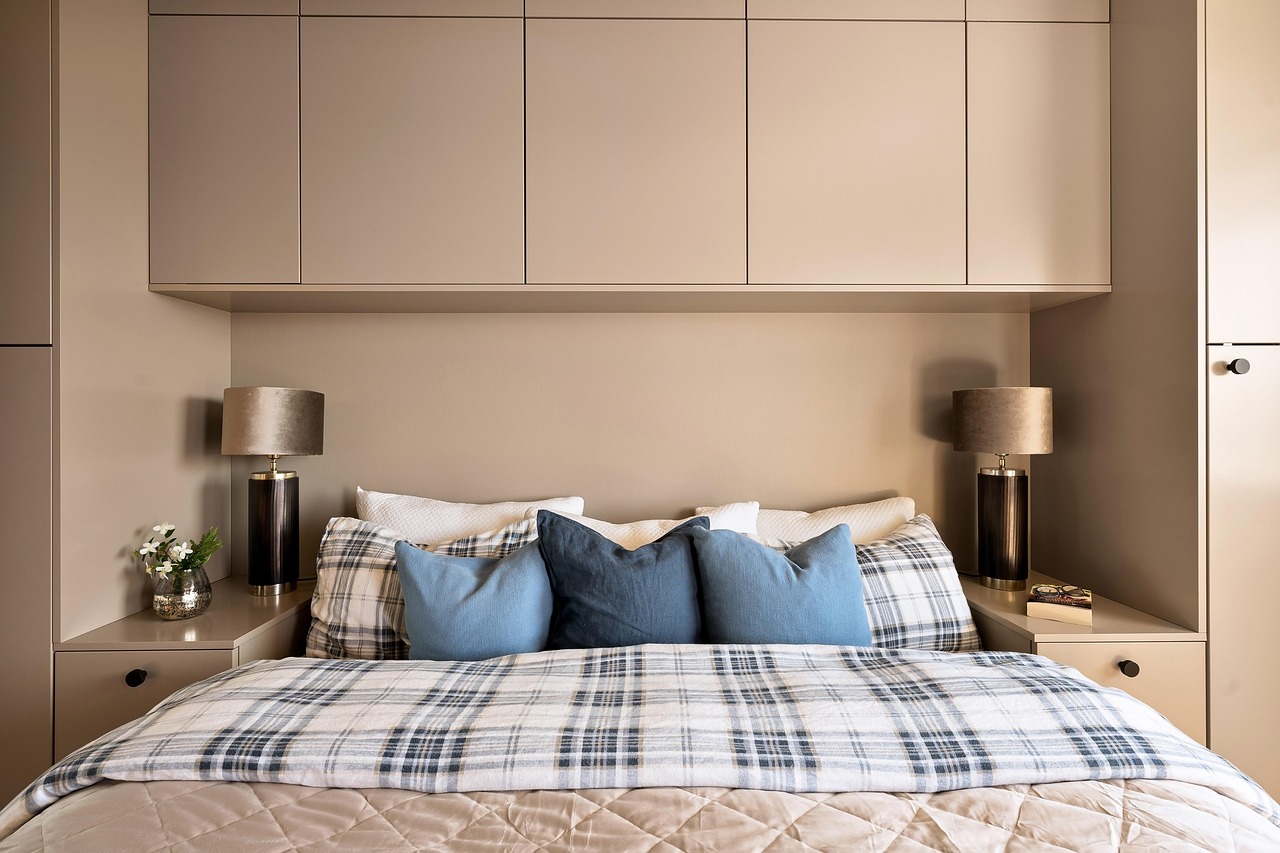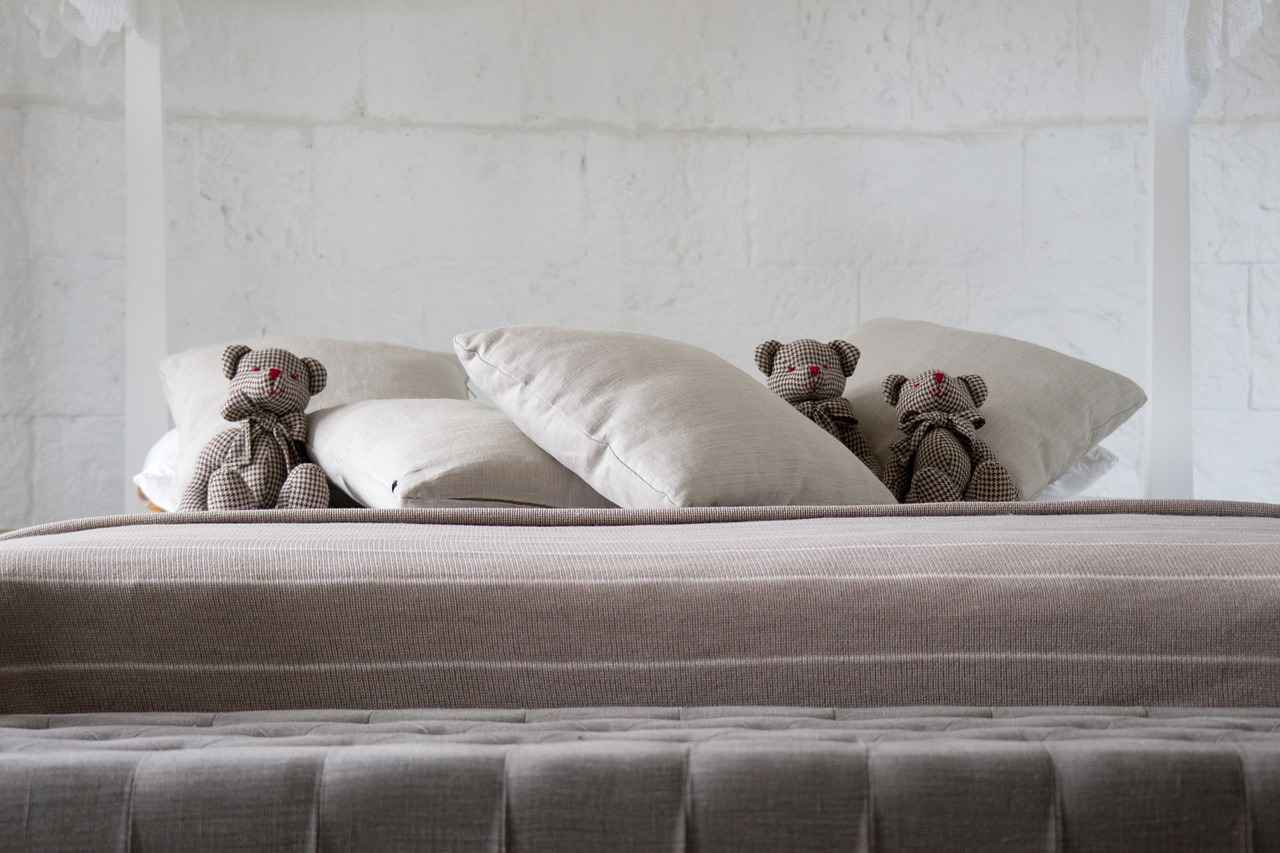As we step into 2025, the realm of bed design is undergoing a remarkable transformation. This year promises to bring forth innovative styles that not only enhance the aesthetic appeal of bedrooms but also prioritize sustainability and functionality. From the use of eco-friendly materials to the integration of smart technology, discover the trends that are set to redefine how we experience sleep.
- Sustainable Materials: Eco-conscious consumers are increasingly opting for beds made from sustainable materials. Bamboo, reclaimed wood, and organic fabrics are leading the way in creating environmentally friendly bedroom furniture.
- Minimalist Aesthetics: The minimalist trend continues to thrive, with clean lines and simple forms dominating the landscape. This approach fosters a serene environment, allowing for relaxation and tranquility.
- Bold Colors and Patterns: In contrast to minimalism, bold colors and vibrant patterns are making a comeback. These elements can transform a bedroom into a lively retreat, adding personality and flair.
- Smart Bed Technology: The rise of smart beds equipped with technology is revolutionizing sleep quality. Features such as sleep tracking and adjustable firmness are becoming commonplace, catering to individual preferences.
- Vintage and Retro Revival: Nostalgia plays a significant role in 2025’s bed designs, with vintage and retro styles being reinterpreted for modern aesthetics. Mid-century modern and Art Deco influences are particularly noteworthy.
- Customization and Personalization: Consumers are seeking personalized bed designs that reflect their unique style. Modular designs and custom bedding options allow for greater flexibility and individuality.
- Global Inspirations: Diverse cultural influences are shaping bed trends, with Bohemian and Mediterranean styles promoting creativity and warmth in bedroom decor.
- Multifunctional Beds: As urban living spaces become smaller, multifunctional beds are essential. Designs that maximize space without sacrificing style, such as Murphy beds and sofa beds, are increasingly popular.
- Luxurious Fabrics: High-quality fabrics like silk and velvet are taking center stage, enhancing both comfort and style in bed design.
- Unique Bed Shapes: Innovative shapes, including circular and canopy beds, are redefining traditional designs and adding a touch of elegance to bedrooms.
- Incorporating Nature: Biophilic design is gaining traction, with natural elements and indoor plants creating a calming atmosphere.
- Future Trends to Watch: Emerging technologies, such as virtual reality and AI-driven designs, are poised to shape the future of bed design, offering personalized solutions based on user preferences.
In conclusion, the bed design trends of 2025 reflect a harmonious blend of sustainability, functionality, and aesthetics. By embracing these trends, homeowners can create inviting and stylish spaces that cater to their individual needs while contributing to a more sustainable future.

1. Sustainable Materials
As we move into 2025, the focus on sustainability in bed design is more pronounced than ever. Consumers are increasingly seeking eco-friendly options that align with their values and contribute to a healthier planet. This shift is evident in the materials used for bed frames, mattresses, and bedding. Let’s explore some of the most popular sustainable materials making waves in the industry.
- Bamboo: Known for its rapid growth and minimal environmental impact, bamboo is becoming a favored material in bed design. Its natural strength and durability make it an excellent choice for bed frames, while its hypoallergenic properties enhance sleep quality.
- Reclaimed Wood: Utilizing reclaimed wood not only reduces waste but also adds a unique aesthetic to bed designs. Each piece tells a story, and the rustic charm of reclaimed wood can create a warm and inviting bedroom atmosphere.
- Organic Fabrics: The demand for organic cotton, linen, and hemp is rising as consumers become more aware of the harmful effects of conventional farming practices. Organic fabrics are free from pesticides and chemicals, making them safer for both the environment and the individual.
By choosing these sustainable materials, consumers can significantly reduce their carbon footprint while enjoying stylish and comfortable bedroom designs. As the trend towards sustainability continues to grow, manufacturers are likely to innovate further, offering even more eco-friendly options that combine aesthetics with responsibility.
In conclusion, the integration of sustainable materials in bed design is not just a trend but a necessary evolution in the industry. By making informed choices, consumers can contribute to a more sustainable future while enhancing their living spaces.
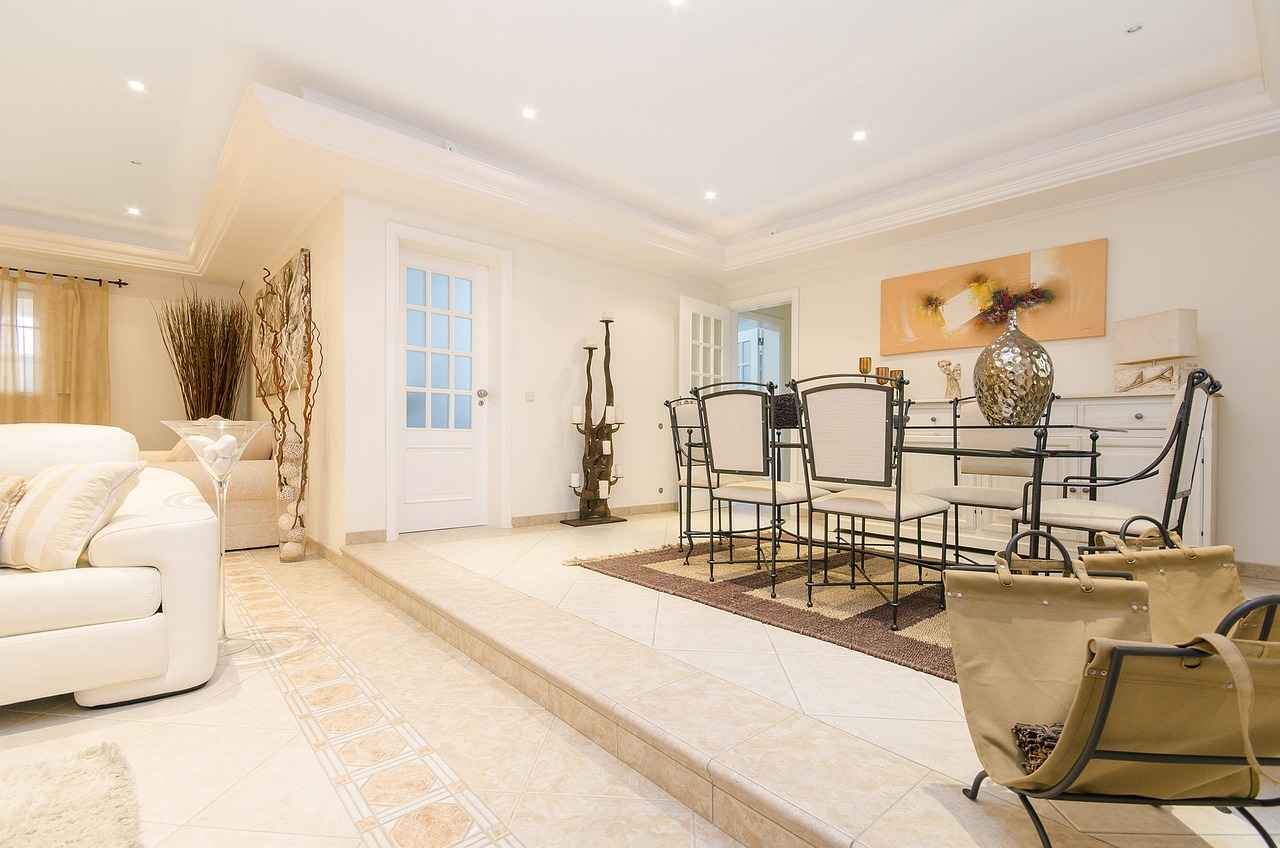
2. Minimalist Aesthetics
Minimalism continues to dominate in 2025, shaping the way we design our bedrooms. As we move forward, the appeal of clean lines and simple forms remains at the forefront of interior design, creating serene environments that promote relaxation and tranquility. This minimalist approach is not just a trend; it reflects a growing desire for simplicity in our increasingly chaotic lives.
At the heart of minimalist aesthetics is the idea that less is more. By eliminating clutter and unnecessary decor, minimalist bedrooms foster a sense of peace and calm. The focus is on functionality, allowing each piece of furniture to serve a purpose while contributing to the overall aesthetic. This approach encourages individuals to invest in quality items that are both beautiful and practical.
One of the key influences on minimalist bedroom design is Scandinavian design. This style emphasizes natural materials, such as wood and cotton, and features a neutral color palette dominated by soft whites, grays, and earthy tones. These colors create a calming atmosphere, making the bedroom a sanctuary for rest and rejuvenation.
Another significant aspect of minimalist design is the incorporation of multifunctional furniture. Beds with built-in storage, for example, maximize space without compromising on style. This trend is particularly beneficial in urban environments where space is at a premium. By choosing furniture that serves multiple purposes, homeowners can maintain a clean and organized bedroom.
Furthermore, the Japanese Zen style is gaining traction within the minimalist movement. Characterized by low-profile beds and natural materials, this style promotes harmony and balance, creating a peaceful sleeping space. The focus on simplicity and connection to nature resonates with those seeking tranquility in their homes.
In conclusion, minimalist aesthetics are redefining bedroom design in 2025. By embracing clean lines, neutral colors, and functional furniture, individuals can create serene environments that promote relaxation and well-being. As we continue to navigate the complexities of modern life, the allure of minimalism will undoubtedly remain strong.
2.1. Scandinavian Influence
Scandinavian design has become a significant influence in contemporary bed designs, celebrated for its emphasis on functionality and simplicity. This design philosophy not only prioritizes aesthetic appeal but also integrates practicality into everyday living. As we explore the impact of Scandinavian influence on bed designs, we will uncover how this style promotes a serene and inviting bedroom atmosphere.
The essence of Scandinavian design lies in its focus on natural elements and understated elegance. The use of organic materials such as wood, cotton, and wool creates a warm and cozy environment. Many bed designs now feature light wood finishes or soft upholstery that evoke a sense of calm, making the bedroom a sanctuary for relaxation.
Color palettes play a crucial role in Scandinavian design. Neutral tones like soft whites, grays, and muted earth colors dominate, contributing to a tranquil atmosphere. These shades not only enhance the sense of space but also allow for easy integration with various decor styles. By incorporating these colors into bedding and accessories, one can achieve a cohesive look that embodies the Scandinavian ethos.
Another hallmark of this design style is the incorporation of functional features. Beds with built-in storage solutions, such as drawers or shelves, are gaining popularity. These multifunctional designs maximize space while maintaining a clean and uncluttered look. Additionally, adjustable bed frames that cater to individual comfort preferences are becoming increasingly common, aligning with the Scandinavian principle of enhancing user experience.
In conclusion, the Scandinavian influence on bed designs is a testament to the beauty of simplicity and functionality. By embracing natural materials, neutral color palettes, and practical features, this style not only transforms bedrooms into peaceful retreats but also reflects a modern approach to living. As we move forward, the principles of Scandinavian design will continue to shape the future of bedroom aesthetics.
2.1.1. Color Palettes
Color Palettes in Scandinavian Design
In the realm of interior design, Scandinavian aesthetics stand out for their emphasis on simplicity and functionality. One of the most significant aspects of this style is its use of neutral color palettes, which play a crucial role in establishing a calming atmosphere, particularly in bedrooms.
Soft whites, gentle grays, and earthy tones are the cornerstones of Scandinavian color schemes. These hues create a serene environment that promotes relaxation and tranquility. The use of soft whites brightens the space, making it feel larger and more open. This color reflects light beautifully, enhancing the overall ambiance of the room.
Incorporating shades of gray adds depth and sophistication to the design. Grays can range from light, almost silvery tones to deeper charcoals, allowing for a versatile backdrop that can be complemented with various decor elements. This adaptability makes gray a popular choice in modern Scandinavian interiors.
Furthermore, earthy tones such as muted greens, browns, and terracotta contribute to a natural and grounded feel. These colors evoke a sense of connection to nature, which is a fundamental principle in Scandinavian design. By integrating these tones, homeowners can create a cozy and inviting atmosphere.
In conclusion, the use of a neutral color palette in Scandinavian design not only enhances the visual appeal of a bedroom but also fosters a calming and peaceful environment. By selecting soft whites, grays, and earthy tones, individuals can transform their spaces into serene retreats that promote rest and relaxation.
2.1.2. Functional Features
Functional Features in modern bed designs are becoming increasingly important as we seek to optimize our living spaces without sacrificing style. In a world where space is often limited, the need for multifunctional furniture has never been more apparent. This trend is especially evident in the realm of bed designs, where functionality meets aesthetic appeal.
One of the most popular innovations is the bed with built-in storage. These beds often come with drawers or compartments underneath the mattress, allowing you to store everything from linens to seasonal clothing. Not only does this feature help keep your bedroom organized, but it also maximizes the use of space, making it ideal for smaller rooms.
Another emerging trend is the adjustable bed. These beds can be modified to suit different sleeping positions, catering to individual comfort needs. Some models even come with features like massage settings and temperature control, further enhancing the user experience. This adaptability is especially beneficial for those who suffer from back pain or other health issues, as it allows for a more personalized sleeping arrangement.
Moreover, the integration of technology into bed design is revolutionizing how we think about sleep. Smart beds equipped with sensors can track your sleep patterns and adjust firmness levels accordingly, ensuring you wake up refreshed and ready for the day. This blend of technology and comfort is redefining our expectations of what a bed can do.
In conclusion, the incorporation of functional features in bed design not only enhances usability but also complements the overall aesthetic of the bedroom. As we continue to embrace minimalist and multifunctional living, these innovative designs will play a crucial role in creating spaces that are both stylish and practical.
2.2. Japanese Zen Style
The Japanese Zen style is an exquisite approach to interior design that emphasizes harmony and balance. This aesthetic, rooted in traditional Japanese culture, seeks to create a tranquil environment that fosters relaxation and mindfulness. In recent years, the popularity of this style has surged, particularly in bedroom design, where the quest for a peaceful sleeping space has become paramount.
At the heart of the Japanese Zen style lies the concept of simplicity. Low-profile beds, often referred to as tatami beds, are a defining feature. These beds are designed to sit close to the ground, promoting a sense of groundedness and stability. The use of natural materials, such as bamboo, wood, and cotton, enhances the connection to nature, which is a fundamental aspect of Zen philosophy.
- Natural Materials: The incorporation of organic fabrics and sustainably sourced woods not only contributes to a serene aesthetic but also aligns with eco-friendly practices.
- Minimalist Design: Clean lines and uncluttered spaces are essential. This minimalism encourages a calm mindset, allowing individuals to unwind after a long day.
- Neutral Color Palettes: Soft whites, earthy tones, and muted colors are prevalent, creating a soothing atmosphere that promotes restful sleep.
Moreover, the layout of a Zen-inspired bedroom often includes open spaces and natural light, which are crucial for enhancing the overall ambiance. By strategically placing furniture and using large windows or shoji screens, the room can feel more expansive and inviting.
In conclusion, embracing the Japanese Zen style in bedroom design not only enhances the aesthetic appeal but also contributes to overall well-being. By focusing on low-profile beds and natural materials, individuals can create a peaceful sanctuary that promotes better sleep and a more harmonious lifestyle.
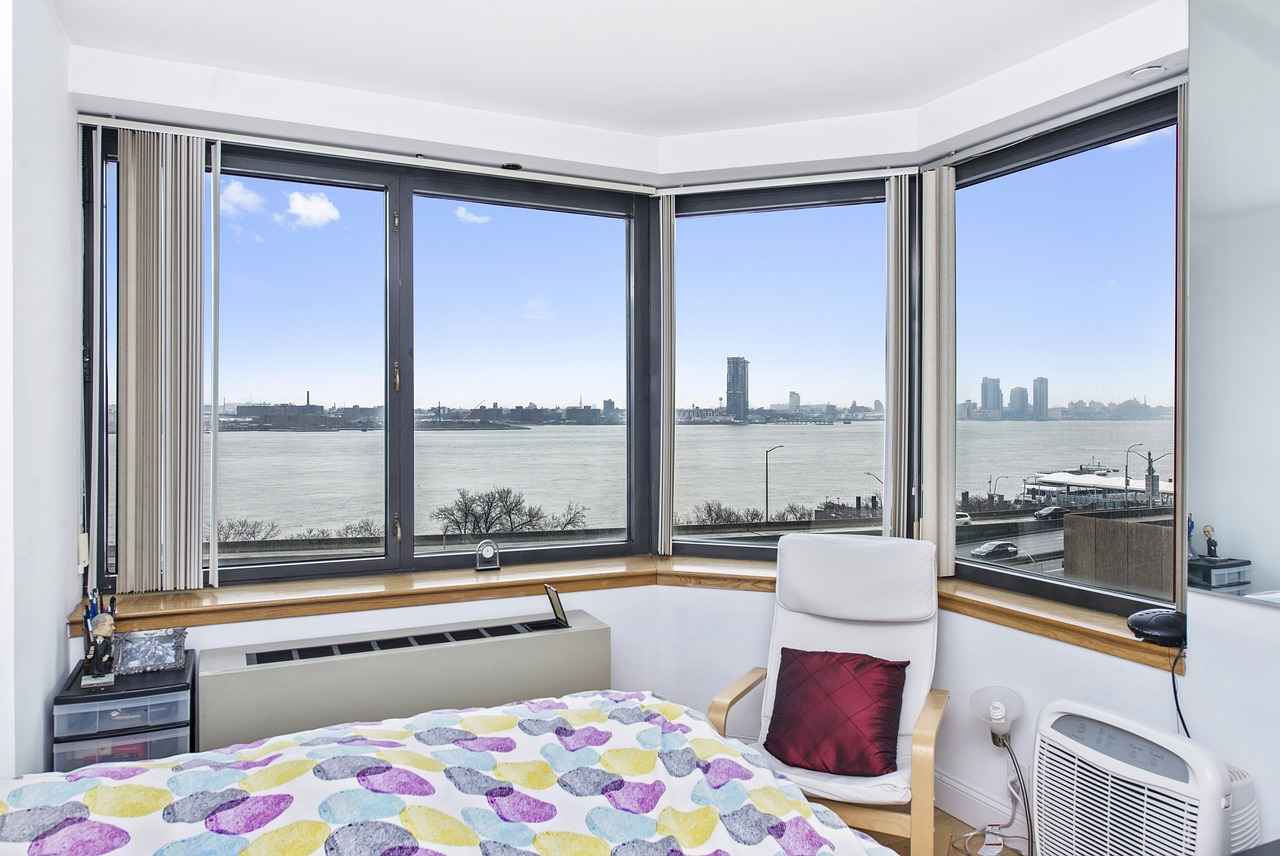
3. Bold Colors and Patterns
Bold Colors and Patterns are making a significant resurgence in the world of interior design, particularly in bedroom aesthetics. As the trend shifts away from minimalism, homeowners are increasingly embracing vibrant hues and eye-catching prints to create lively and inviting spaces. This article explores how these bold choices can transform a bedroom into a vibrant retreat, making it a personal sanctuary that reflects individuality.
Incorporating vibrant colors into bedroom design can dramatically alter the mood of the space. Colors like deep blues, rich reds, and sunny yellows can evoke various emotions and set the tone for relaxation or energy. For instance, a bold accent wall painted in a striking shade can serve as a focal point, drawing the eye and creating a sense of drama.
- Statement Headboards: One of the most effective ways to introduce bold patterns into a bedroom is through statement headboards. Oversized and upholstered headboards featuring geometric designs or floral prints can add a touch of personality and flair. These pieces not only enhance the aesthetic appeal but also serve as functional elements in the room.
- Layering Textures: Mixing various textures is essential for creating visual interest. Combining materials like velvet, linen, and leather can enhance the overall aesthetic of a bed, making it more inviting. A velvet throw pillow paired with a linen duvet can create a cozy yet stylish look.
- Accent Accessories: Accessories like bold rugs, colorful curtains, and vibrant artwork can complement the main color scheme. These elements allow for easy updates to the room’s style without a complete overhaul.
Furthermore, the use of bold prints in bedding and decor can create a cohesive look that ties the room together. Patterns such as abstract designs, tribal prints, or botanical motifs can add depth and character to the space. When carefully curated, these elements can transform a mundane bedroom into a lively retreat that reflects personal style.
In conclusion, embracing bold colors and patterns in bedroom design offers a fantastic opportunity to express individuality and creativity. By incorporating statement pieces, layering textures, and utilizing vibrant accessories, homeowners can create a dynamic and inviting atmosphere that promotes relaxation and rejuvenation.
3.1. Statement Headboards
Statement headboards are quickly becoming essential elements in contemporary bedroom design, serving as bold focal points that can transform the overall aesthetic of the space. As we step into 2025, the trend of oversized, patterned, and upholstered headboards is gaining momentum, allowing homeowners to express their unique styles and preferences.
One of the most striking features of statement headboards is their ability to add personality to any bedroom. Whether you prefer a vibrant, patterned design or a more subdued, elegant upholstered piece, these headboards can set the tone for the entire room. Here are some key trends to consider:
- Oversized Designs: Large headboards make a bold statement and can serve as the centerpiece of the room. They can create a sense of grandeur and luxury, especially in spacious bedrooms.
- Patterned Options: From geometric shapes to floral motifs, patterned headboards can add visual interest and depth. They allow for creativity and can complement or contrast with existing decor.
- Upholstered Styles: Upholstered headboards offer both comfort and style. They are perfect for creating a cozy atmosphere, and the fabric choices can range from plush velvet to sleek leather, catering to various tastes.
In addition to their aesthetic appeal, statement headboards also provide practical benefits. They can help to define the sleeping area in open-concept spaces and can even offer additional support when sitting up in bed. Furthermore, many modern designs incorporate storage solutions, making them both functional and stylish.
As you consider incorporating a statement headboard into your bedroom, think about how it can reflect your personal style and enhance the overall design of your space. With countless options available, you can find the perfect piece that not only complements your decor but also serves as a conversation starter.
In conclusion, statement headboards are more than just functional pieces; they are an opportunity to showcase your style and creativity. As this trend continues to evolve in 2025, expect to see even more innovative designs that push the boundaries of traditional bedroom aesthetics.
3.2. Layering Textures
Layering textures is a fundamental principle in interior design that adds depth and visual intrigue to any space, especially in the bedroom. By combining various fabrics and materials, you can create a rich tapestry of sensory experiences that enhance the overall aesthetic of your bed.
To achieve a harmonious look, consider incorporating a mix of fabrics such as velvet, linen, and leather. Each of these materials brings its unique qualities and characteristics:
- Velvet: Known for its luxurious feel and rich color saturation, velvet can add a touch of elegance to your bed. It works beautifully as a bedspread or decorative pillows, creating a cozy yet sophisticated atmosphere.
- Linen: This breathable fabric offers a relaxed and casual vibe. Linen sheets or throws can soften the overall look, providing a contrast to the opulence of velvet.
- Leather: Incorporating leather elements, whether in the form of a headboard or decorative accents, introduces a sleek and modern touch. Its durability and texture provide a striking contrast to softer fabrics.
When layering textures, consider the color palette as well. A cohesive color scheme can tie together different materials, making the design feel intentional and well-thought-out. For instance, pairing deep jewel tones of velvet with muted earth tones of linen can create a balanced and inviting space.
Additionally, don’t shy away from mixing patterns and prints. A patterned throw blanket can add an unexpected pop against solid-colored bedding, while textured cushions can enhance the tactile experience of your bed. The key is to maintain a sense of balance; too many conflicting textures can overwhelm the space.
Ultimately, layering textures not only enhances the visual appeal of your bed but also invites comfort and warmth into your bedroom. By thoughtfully combining materials, you can create a personalized sanctuary that reflects your unique style.

4. Smart Bed Technology
Smart Bed Technology is transforming the way we experience sleep in 2025. As technology advances, these innovative beds are becoming essential for those seeking to enhance their sleep quality. This section delves into the features that are revolutionizing our nightly rest, including sleep tracking and adjustable firmness.
One of the most significant advancements in smart beds is the integration of sleep tracking technology. This feature allows users to monitor their sleep patterns and gain insights into their sleep quality. By tracking factors such as heart rate, movement, and breathing patterns, individuals can better understand their sleep habits. Many smart beds come equipped with companion apps that provide personalized recommendations based on the collected data, helping users improve their overall sleep health.
Another groundbreaking feature of smart beds is the ability to adjust firmness levels. This customizable comfort allows users to set their mattress to their preferred level of support, catering to individual preferences. Whether you prefer a firmer surface for back support or a softer feel for comfort, smart beds can adapt to meet your needs. This feature is especially beneficial for couples who may have different sleeping preferences, ensuring both partners can enjoy a comfortable night’s sleep.
- Temperature Control: Many smart beds now include built-in heating and cooling systems to help regulate body temperature throughout the night.
- Smart Home Integration: These beds can connect with other smart home devices, allowing users to control lighting, sound, and more from their bed.
- Anti-snore Technology: Some models feature mechanisms that can gently elevate the head of the bed to reduce snoring.
As we move further into 2025, the popularity of smart beds is only expected to grow. With their advanced features and ability to personalize the sleep experience, these beds are set to redefine our understanding of quality sleep.
4.1. Sleep Tracking Features
Advanced sleep tracking technology has revolutionized the way individuals monitor their sleep patterns, providing insights that can significantly enhance sleep health and overall well-being. As more people become aware of the importance of quality sleep, these innovations are gaining traction.
Sleep tracking devices, including smartwatches and dedicated sleep monitors, utilize a variety of sensors to gather data on sleep duration, quality, and cycles. This information is then analyzed to offer users a comprehensive view of their sleep habits. Here are some key features of advanced sleep tracking technology:
- Heart Rate Monitoring: Many devices track heart rate variability during sleep, which can indicate stress levels and overall health.
- Sleep Cycle Analysis: By distinguishing between REM, light, and deep sleep, users can understand how much restorative sleep they are getting.
- Sleep Environment Assessment: Some devices monitor ambient conditions like temperature and noise levels, helping users create a more conducive sleep environment.
- Personalized Insights: Advanced algorithms analyze individual sleep patterns and provide tailored recommendations for improving sleep quality.
Implementing these features can lead to improved sleep health. For instance, understanding sleep cycles can help individuals adjust their bedtime to maximize REM sleep, which is essential for cognitive function and emotional regulation. Furthermore, insights into environmental factors can guide users in making adjustments, such as reducing noise or optimizing room temperature.
In conclusion, advanced sleep tracking technology not only helps individuals monitor their sleep patterns but also empowers them to make informed decisions that enhance their sleep quality. By leveraging these innovations, users can take proactive steps towards better sleep health and overall well-being.
4.2. Adjustable Firmness
Adjustable firmness settings in modern beds are revolutionizing the way we approach sleep comfort. This innovative feature allows users to customize the feel of their mattress according to their unique preferences, ensuring that everyone can enjoy a restful night’s sleep.
With the rise of personalized sleep solutions, adjustable firmness is becoming increasingly popular. Here’s how this feature caters to individual needs:
- Personalized Comfort: Everyone has different sleep preferences—some prefer a firmer surface for support, while others enjoy a softer feel for pressure relief. Adjustable firmness settings allow users to find their ideal level of comfort, promoting better sleep quality.
- Partner Compatibility: Couples often have differing comfort needs. Beds with adjustable firmness enable each partner to customize their side of the mattress, ensuring both can sleep comfortably without compromising on their preferences.
- Health Benefits: Proper spinal alignment is crucial for a good night’s sleep. By adjusting the firmness, users can enhance their sleep posture, potentially alleviating issues such as back pain or discomfort.
- Adaptability: As our bodies change over time, our sleep needs may also evolve. Adjustable firmness settings allow users to modify their mattress as needed, making it a long-term investment in sleep health.
In conclusion, the adjustable firmness feature is not just a trend; it’s a significant advancement in sleep technology. By catering to individual preferences, it ensures that everyone can achieve a better night’s sleep, leading to improved overall well-being.

5. Vintage and Retro Revival
Vintage and Retro Revival in bed design is taking center stage in 2025, as nostalgia-driven aesthetics are captivating homeowners and designers alike. This trend is characterized by a resurgence of classic styles that evoke memories of the past while being seamlessly integrated into modern interiors.
The appeal of vintage and retro designs lies in their ability to combine functionality with a sense of history. Many consumers are drawn to these styles because they offer a unique charm that contemporary designs often lack. Let’s explore how these timeless designs are being reinterpreted for today’s aesthetic.
- Mid-Century Modern Influence: This iconic style is making a significant comeback, characterized by its clean lines and organic forms. Mid-century modern beds often feature tapered legs and a minimalist structure that fits perfectly into contemporary spaces while still providing a nostalgic feel.
- Art Deco Glamour: Art Deco elements are being revived in bed designs through luxurious materials like velvet and polished metals. Geometric patterns and bold colors are adding a touch of glamour to modern bedrooms, creating a striking visual appeal.
- Retro Colors and Patterns: Vibrant hues such as mustard yellow, teal, and burnt orange are making waves in bed design. These colors, paired with retro patterns, can transform a bedroom into a lively retreat that celebrates the past.
Moreover, the customization of vintage-inspired beds is becoming increasingly popular. Consumers are seeking unique pieces that reflect their individual style, leading to a rise in bespoke designs that incorporate elements from various eras. This trend encourages creativity and personal expression in bedroom decor.
In conclusion, the vintage and retro revival in bed design is not just a fleeting trend; it represents a deeper appreciation for the past and a desire to incorporate its charm into modern living. As designers continue to innovate while respecting these classic styles, we can expect to see even more exciting interpretations in the years to come.
5.1. Mid-Century Modern Influence
Mid-century modern beds have long been admired for their distinctive shapes and materials, embodying a design philosophy that marries form and function. As we navigate through 2025, this iconic style is experiencing a resurgence, seamlessly blending with contemporary aesthetics to create spaces that are both timeless and fresh.
This design movement, which flourished from the 1940s to the 1960s, emphasizes clean lines, organic forms, and a connection to nature. Today, designers are reinterpreting these principles, infusing modern elements while maintaining the essence of mid-century style. The result is a harmonious balance that appeals to both nostalgic sentiments and modern sensibilities.
- Iconic Shapes: The characteristic low-profile designs and tapered legs of mid-century beds are being embraced in contemporary interiors. These shapes not only provide a visual anchor in a room but also promote a sense of spaciousness.
- Materials: Natural woods, such as oak and walnut, are predominant in mid-century modern beds. These materials are often paired with upholstered headboards in vibrant fabrics, adding a touch of warmth and comfort.
- Color Plays: While traditional mid-century designs favored muted tones, modern interpretations are incorporating bold colors and patterns, allowing for a personalized touch that can energize a bedroom.
Moreover, the integration of eco-friendly practices in manufacturing these beds has become a key trend. As consumers increasingly prioritize sustainability, many brands are opting for reclaimed wood and organic textiles, ensuring that the beauty of mid-century modern design does not come at the expense of the environment.
In conclusion, the revival of mid-century modern beds in contemporary design not only pays homage to a beloved era but also enhances modern living spaces. By blending classic elements with innovative practices, this style continues to inspire, proving that good design is indeed timeless.
5.2. Art Deco Glamour
Art Deco Glamour is making a significant comeback in bed designs, captivating modern homeowners with its luxurious appeal and intricate details. This design style, which flourished in the 1920s and 1930s, is characterized by bold geometric patterns, rich colors, and opulent materials that evoke a sense of sophistication and elegance.
Today, designers are reintroducing Art Deco elements into contemporary bedroom settings, creating a unique fusion of vintage charm and modern aesthetics. Here are some key aspects of how Art Deco is influencing bed designs:
- Luxurious Materials: The use of sumptuous fabrics such as velvet, silk, and high-quality leather is prevalent in Art Deco-inspired beds. These materials not only add a touch of glamour but also enhance comfort and durability.
- Geometric Patterns: Bold geometric shapes and intricate patterns are hallmarks of Art Deco design. From headboards adorned with chevrons to bedding featuring angular motifs, these patterns create a striking visual impact.
- Metallic Accents: Incorporating metals such as brass, gold, or chrome can elevate the overall design. These materials are often used in bed frames, accents, or decorative elements, reflecting light and adding a sense of luxury.
- Color Schemes: Art Deco embraces rich and vibrant colors, including deep blues, emerald greens, and striking blacks. These hues can be used in upholstery, wall colors, or decorative accessories to create a cohesive and glamorous look.
When integrating Art Deco elements into your bedroom, consider the overall balance of the space. Mixing modern furniture with vintage-inspired pieces can create a harmonious blend that feels both fresh and timeless. Additionally, paying attention to lighting can enhance the Art Deco aesthetic; consider using statement chandeliers or elegant lamps that echo the style’s opulence.
In conclusion, the resurgence of Art Deco glamour in bed designs offers a wonderful opportunity to infuse your bedroom with personality and elegance. By embracing luxurious materials, bold patterns, and sophisticated colors, you can create a stunning retreat that pays homage to this iconic design movement while remaining firmly rooted in contemporary style.
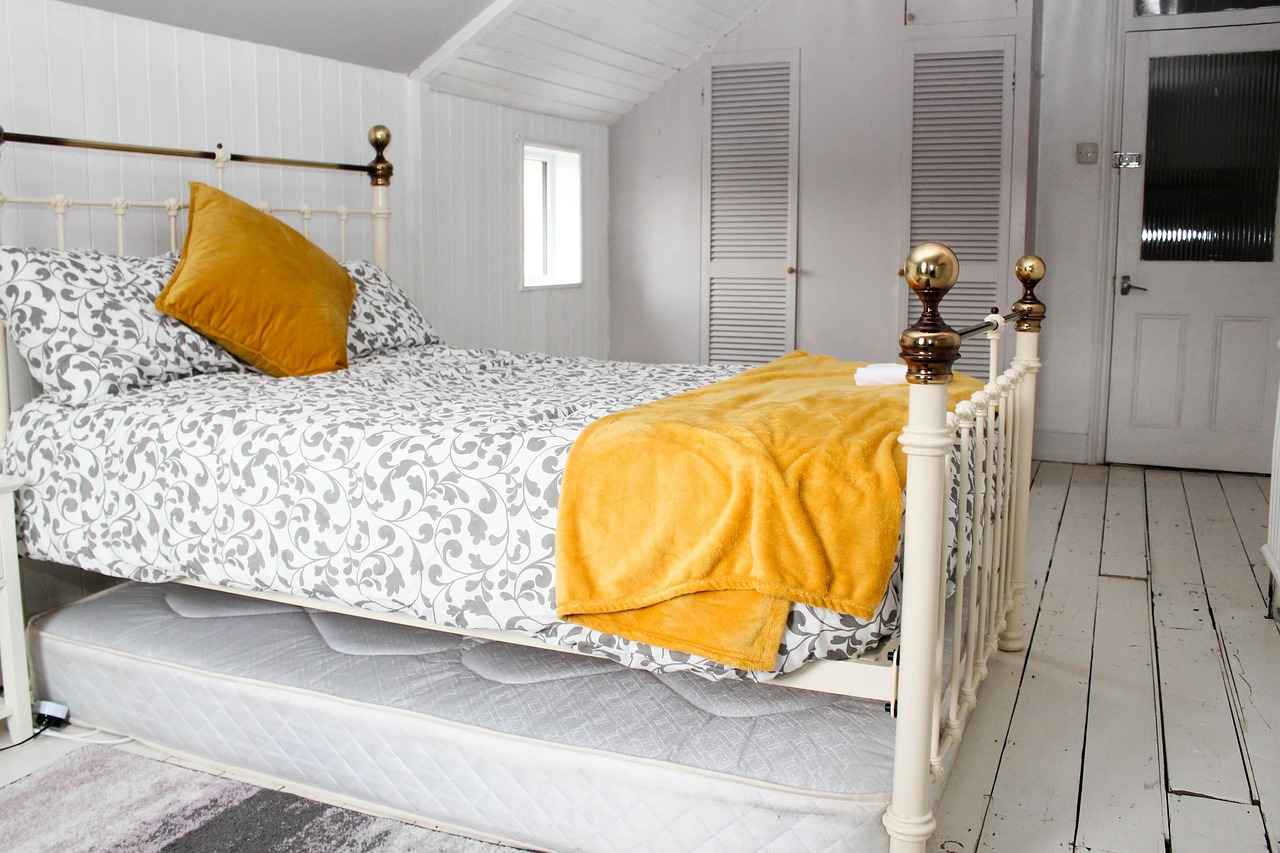
6. Customization and Personalization
Customization and personalization in bed design have become increasingly important as consumers seek to create unique spaces that reflect their individual styles and preferences. This trend is reshaping the way we view and select our sleeping environments, allowing for a deeper connection between the user and their bedroom.
As people spend more time at home, the desire for personalized spaces has surged. Consumers are no longer satisfied with generic designs; they want beds that tell their unique stories. This shift is evident in the growing popularity of modular designs and custom bedding options.
- Modular Designs: These innovative systems allow users to mix and match components to create beds that fit their specific needs. Whether it’s adding storage solutions or adjusting the height, modular designs offer unparalleled flexibility.
- Personalized Bedding: Custom bedding options are becoming a staple in modern bedrooms. From monogrammed sheets to unique color patterns, personalized bedding enhances the overall aesthetic and brings a sense of ownership to the space.
Moreover, the rise of online retailers has made it easier than ever for consumers to explore customization options. Many brands now offer online tools that allow customers to visualize their designs before making a purchase. This interactive experience not only empowers consumers but also fosters creativity.
In addition to aesthetic choices, personalization extends to functionality. Beds with built-in technology can be customized to suit individual preferences, from adjustable firmness settings to integrated sleep tracking systems. These features enhance comfort and cater to the unique needs of each sleeper.
In conclusion, the trend towards customization and personalization in bed design reflects a broader shift in consumer behavior. As individuals seek to create spaces that resonate with their identities, the demand for unique and tailored bed designs will only continue to grow. This evolution not only enhances the bedroom experience but also signifies a deeper connection between people and their living spaces.
6.1. Modular Designs
Modular bed designs are revolutionizing the way we think about bedroom furniture. These innovative systems provide users with the flexibility to create beds tailored to their individual needs and spatial constraints. As we delve into the world of modular designs, we will explore their numerous advantages and how they cater to diverse lifestyles.
One of the standout features of modular bed designs is their customizability. Users can mix and match components such as headboards, storage units, and side tables to create a bed that not only fits their aesthetic preferences but also enhances functionality. This level of personalization allows for a unique bedroom environment that reflects the owner’s style.
Moreover, modular bed systems are particularly beneficial for those living in small spaces. With the rising trend of urban living, many individuals are seeking solutions that maximize limited square footage. Modular beds can be designed to include built-in storage, such as drawers or shelves, eliminating the need for additional furniture and helping to keep the bedroom organized and clutter-free.
Another advantage of modular designs is their adaptability. As lifestyles change, so can the bed configuration. Whether transitioning from a single to a double bed or accommodating a growing family, modular systems can be easily reconfigured to meet evolving needs. This adaptability makes them a wise long-term investment.
In addition to functionality, modular beds can also incorporate eco-friendly materials. Many manufacturers are now offering sustainable options, allowing consumers to make environmentally conscious choices without sacrificing style or comfort. This trend aligns with the growing demand for sustainable living solutions.
In conclusion, modular bed designs offer unparalleled flexibility, customization, and practicality. They not only cater to personal style but also address the challenges of modern living, making them an ideal choice for anyone looking to enhance their bedroom experience.
6.2. Personalized Bedding
Personalized bedding options are rapidly gaining popularity among homeowners looking to add a unique touch to their bedrooms. In a world where individuality is celebrated, custom bedding allows you to express your personal style through a variety of colors, patterns, and monograms. This article explores how these personalized elements can significantly enhance the overall aesthetic of your bedroom.
One of the most appealing aspects of personalized bedding is the ability to choose colors that resonate with your personal taste. Whether you prefer calming pastels or vibrant hues, custom bedding can be tailored to match your existing decor or to create a striking contrast that becomes the focal point of the room.
In addition to colors, patterns play a crucial role in defining the character of your bedding. From floral designs to geometric shapes, the options are virtually limitless. Mixing and matching different patterns can create a dynamic look, while cohesive designs can promote a sense of harmony and tranquility.
Another exciting feature of personalized bedding is the option for monograms. Adding initials or family names to your bed linens not only elevates the style but also adds a sense of ownership and warmth to the space. This small detail can transform ordinary bedding into a cherished family heirloom.
Incorporating personalized bedding into your bedroom design is more than just a trend; it’s a way to create a sanctuary that reflects your personality. As you explore various options, consider how each element—color, pattern, and personalization—contributes to the overall ambiance of your room.
Ultimately, custom bedding not only enhances the aesthetic appeal of your bedroom but also fosters a sense of comfort and belonging. By choosing personalized options, you can create a space that is uniquely yours, making every night’s sleep a little more special.
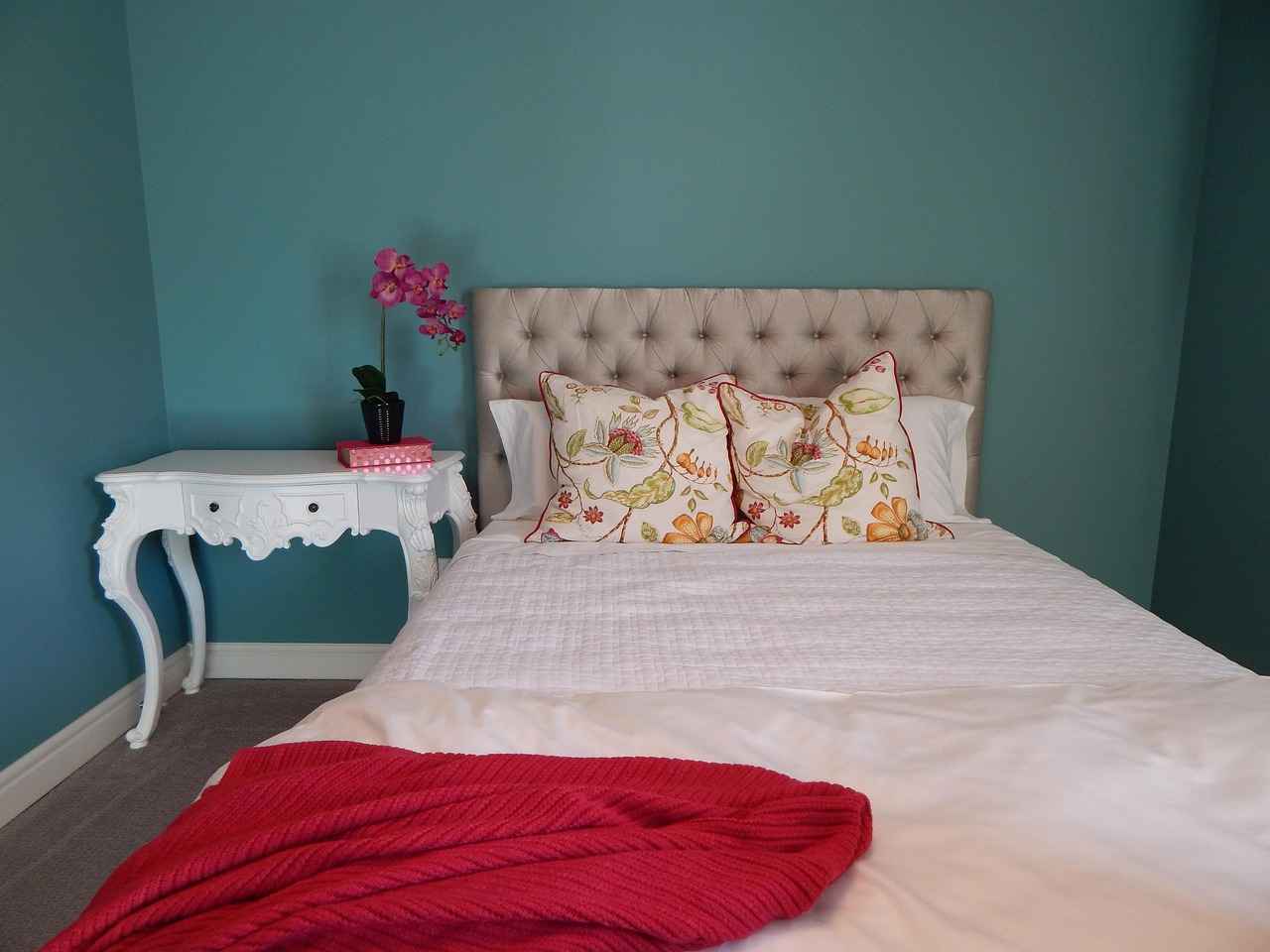
7. Global Inspirations
Global design influences are shaping bed trends in 2025. As the world becomes increasingly interconnected, diverse cultural aesthetics are inspiring unique styles and features in contemporary bed designs. This section delves into how various global inspirations are redefining the way we perceive and create our sleeping spaces.
- Bohemian Styles: Embracing an eclectic mix of patterns, textures, and colors, Bohemian-inspired beds are becoming a popular choice. This style promotes creativity and individuality, allowing homeowners to express their personal taste through vibrant textiles and unique decor.
- Mediterranean Influences: Characterized by warm tones and rustic charm, Mediterranean design elements are being integrated into bed designs. These influences create a cozy and inviting atmosphere, often featuring natural materials like wood and stone that evoke a sense of tranquility.
- Asian Aesthetics: Drawing from the principles of Zen, Asian-inspired beds focus on simplicity and harmony. Low-profile beds made from natural materials, such as bamboo and rattan, contribute to a peaceful sleeping environment, promoting relaxation and mindfulness.
- Industrial Chic: Inspired by urban environments, industrial design incorporates raw materials like metal and reclaimed wood. Beds with an industrial flair often feature bold lines and a minimalist approach, appealing to those who appreciate modern aesthetics with a touch of rugged charm.
- African Tribal Patterns: Rich in history and culture, African tribal designs are making their way into bed decor. Bold prints and vibrant colors inspired by traditional textiles can create a striking focal point in any bedroom, celebrating cultural heritage and artistry.
As we look ahead, it’s clear that global inspirations will continue to shape the bed trends of 2025. By incorporating elements from various cultures, designers are creating unique and personalized sleeping environments that reflect the diverse world we live in.
7.1. Bohemian Styles
Bohemian Styles in bedroom design are an eclectic celebration of creativity, individuality, and vibrant aesthetics. This style draws inspiration from various cultures and artistic movements, resulting in a unique and personal space that reflects the homeowner’s personality.
At the heart of Bohemian-inspired beds is the use of eclectic designs and a bold mix of colors. Unlike traditional styles that adhere to strict color palettes and patterns, Bohemian decor encourages a playful approach to design. This means layering rich textures, mixing patterns, and incorporating various materials to create a warm and inviting atmosphere.
Key Elements of Bohemian Bedroom Design:
- Vibrant Color Schemes: Rich jewel tones like emerald green, deep purple, and ruby red are often paired with earthy tones, creating a harmonious yet dynamic environment.
- Textural Variety: Mixing fabrics such as velvet, cotton, and linen adds depth to the design. Throw pillows, blankets, and rugs in varying textures contribute to the overall cozy feel.
- Artistic Accessories: Incorporating artwork, handcrafted items, and cultural artifacts can enhance the Bohemian vibe. These elements tell a story and add layers of meaning to the decor.
The Bohemian style promotes creativity and individuality by allowing homeowners to express their personal tastes without the constraints of conventional design rules. This freedom encourages experimentation, making it possible to combine vintage finds with modern pieces, resulting in a space that is uniquely yours.
In conclusion, embracing a Bohemian-inspired bedroom design not only showcases a love for color and texture but also fosters a sense of comfort and creativity. By incorporating these elements, you can transform your bedroom into a lively retreat that reflects your personal style and invites inspiration.
7.2. Mediterranean Influences
Mediterranean design elements are celebrated for their ability to infuse spaces with warmth and charm. This style, characterized by its vibrant colors, rustic textures, and natural materials, is increasingly being integrated into modern bed designs, creating a cozy and inviting atmosphere in bedrooms.
One of the key features of Mediterranean design is its emphasis on earthy tones and natural textures. Colors like terracotta, deep blues, and soft yellows evoke the essence of sun-drenched landscapes and coastal views. When applied to bed designs, these colors can transform a bedroom into a serene retreat, reminiscent of a Mediterranean villa.
Incorporating natural materials such as wood, stone, and woven fabrics is essential in achieving this look. For instance, beds crafted from reclaimed wood not only offer durability but also add a rustic charm that is central to Mediterranean aesthetics. These materials are often paired with soft linens and textured throws to create a layered, inviting feel.
Another important aspect is the use of ornate details and craftsmanship. Mediterranean design often features intricate patterns and artisanal touches, which can be reflected in headboards or bed frames. For example, a beautifully carved wooden headboard can serve as a stunning focal point, enhancing the overall ambiance of the room.
To further embrace this style, consider accessorizing with decorative pillows and throws that showcase traditional Mediterranean patterns like paisley or floral motifs. These elements add depth and personality to the bed, making it not only a place for rest but also a visual centerpiece.
In conclusion, integrating Mediterranean influences into bed designs allows homeowners to create spaces that are not only stylish but also inviting and comfortable. By focusing on natural materials, earthy colors, and artisanal details, anyone can achieve a cozy atmosphere that embodies the warmth and charm of the Mediterranean.
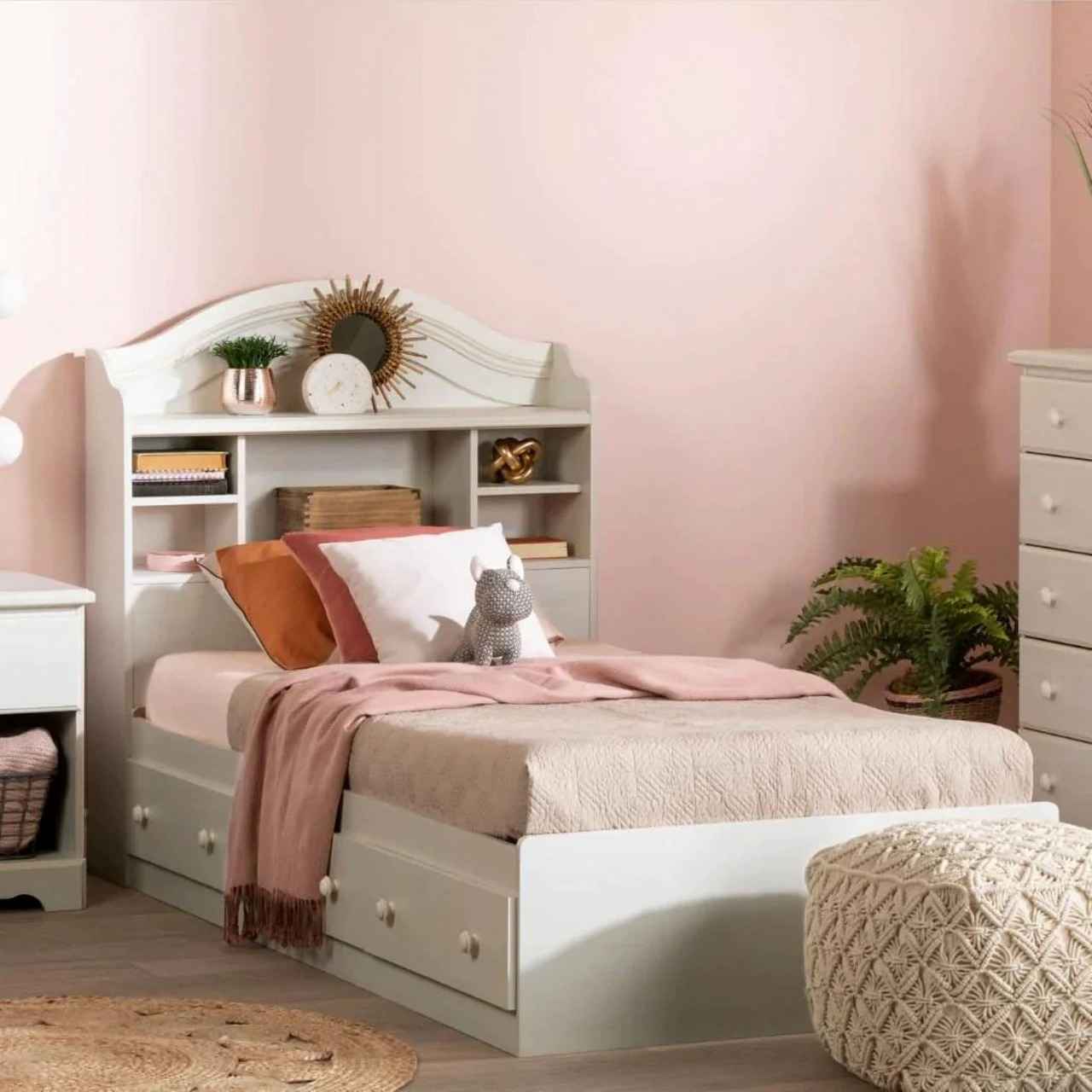
8. Multifunctional Beds
Multifunctional Beds: The Ultimate Space-Saving Solution
As urban living spaces continue to shrink, the demand for multifunctional beds has surged. These innovative designs not only maximize space but also offer style and versatility for modern homes. In this section, we will explore various multifunctional bed options that cater to the needs of contemporary living.
| Type of Multifunctional Bed | Features | Benefits |
|---|---|---|
| Murphy Beds | Wall-mounted, foldable design | Free up floor space when not in use |
| Sofa Beds | Convertible from sofa to bed | Ideal for accommodating guests |
| Loft Beds | Raised design with space underneath | Creates additional room for a desk or seating area |
| Storage Beds | Built-in drawers or compartments | Maximizes storage without extra furniture |
One of the most popular options is the Murphy bed, which can be easily folded up into the wall when not in use. This design is perfect for small apartments where every square foot counts. Modern Murphy beds come in various styles, allowing them to blend seamlessly with any decor.
Another versatile choice is the sofa bed, which serves as both a comfortable seating area and a bed for guests. With a variety of styles and fabrics available, these beds can enhance the aesthetic of your living room while providing functionality.
For those looking to maximize vertical space, loft beds are an excellent solution. By raising the bed, you free up valuable floor space for a desk, seating area, or storage. This is particularly beneficial for students or young professionals living in compact spaces.
Lastly, storage beds feature built-in drawers and compartments, making them ideal for those who need extra storage without the bulk of additional furniture. They are perfect for keeping bedrooms tidy and organized.
In conclusion, multifunctional beds are essential in today’s urban living environments. They provide practical solutions without compromising on style, making them a valuable addition to any home.
8.1. Murphy Beds
Murphy beds, also known as wall beds, are a timeless solution for maximizing space in smaller living environments. These innovative beds can be folded up into the wall when not in use, allowing for greater flexibility in room design and functionality. In recent years, modern iterations of Murphy beds have evolved significantly, making them not only practical but also stylish additions to any room decor.
Today’s Murphy beds are designed with versatility in mind, seamlessly blending into various interior styles. From sleek, minimalist designs to more ornate, vintage-inspired options, there is a Murphy bed to suit every aesthetic. Many contemporary models feature custom cabinetry that allows the bed to be hidden behind elegant doors or integrated into existing furniture, effectively transforming the space.
- Space-Saving Solutions: Modern Murphy beds are engineered to maximize floor space, making them ideal for apartments, guest rooms, or home offices.
- Design Integration: The latest designs incorporate finishes and colors that complement the overall decor, ensuring that the bed does not disrupt the room’s harmony.
- Quality Materials: High-quality materials are used in the construction of these beds, providing durability and comfort while maintaining an attractive appearance.
Furthermore, many Murphy beds come equipped with additional features such as built-in lighting, shelving, and even storage solutions to enhance their functionality. This trend towards multifunctional furniture is not just about saving space; it’s about creating a cohesive living environment that meets the diverse needs of modern lifestyles.
In conclusion, Murphy beds are no longer just a practical solution for small spaces; they are a stylish and functional choice that can elevate the design of any room. With their ability to blend seamlessly into various decor styles, they offer a perfect solution for those looking to maximize both space and style in their homes.
8.2. Sofa Beds and Daybeds
Sofa beds and daybeds have become essential furnishings in modern homes, especially in urban areas where space is often limited. These versatile pieces not only provide a comfortable seating area during the day but can easily transform into a cozy sleeping space for guests at night. This dual functionality makes them a popular choice for those looking to maximize their living space without sacrificing style.
One of the key advantages of sofa beds is their ability to blend seamlessly into various interior designs. Whether your home features a modern, minimalist aesthetic or a more traditional decor, there is a sofa bed that can complement your style. Many contemporary designs come with sleek lines and chic upholstery, making them an attractive addition to any room.
Daybeds, on the other hand, offer a unique charm that can serve as both a sofa and a bed. They are particularly effective in guest rooms, studies, or even living rooms, providing a stylish solution for unexpected visitors. With the right bedding and decorative pillows, a daybed can become a focal point of the room while maintaining its functionality.
| Feature | Sofa Bed | Daybed |
|---|---|---|
| Functionality | Converts from sofa to bed | Serves as a sofa and bed |
| Style | Variety of modern designs | Classic and versatile |
| Best For | Living rooms, guest rooms | Guest rooms, studies, living areas |
In addition to their practical uses, both sofa beds and daybeds can enhance the aesthetic appeal of your home. By selecting stylish fabrics and colors, you can create a cohesive look that ties your room together. Furthermore, many designs now incorporate built-in storage options, allowing for even greater functionality without cluttering your space.
In conclusion, investing in a sofa bed or daybed is a smart choice for anyone looking to maximize space and versatility in their home. With their ability to serve multiple purposes while maintaining aesthetic appeal, these pieces are an excellent addition to any interior design.
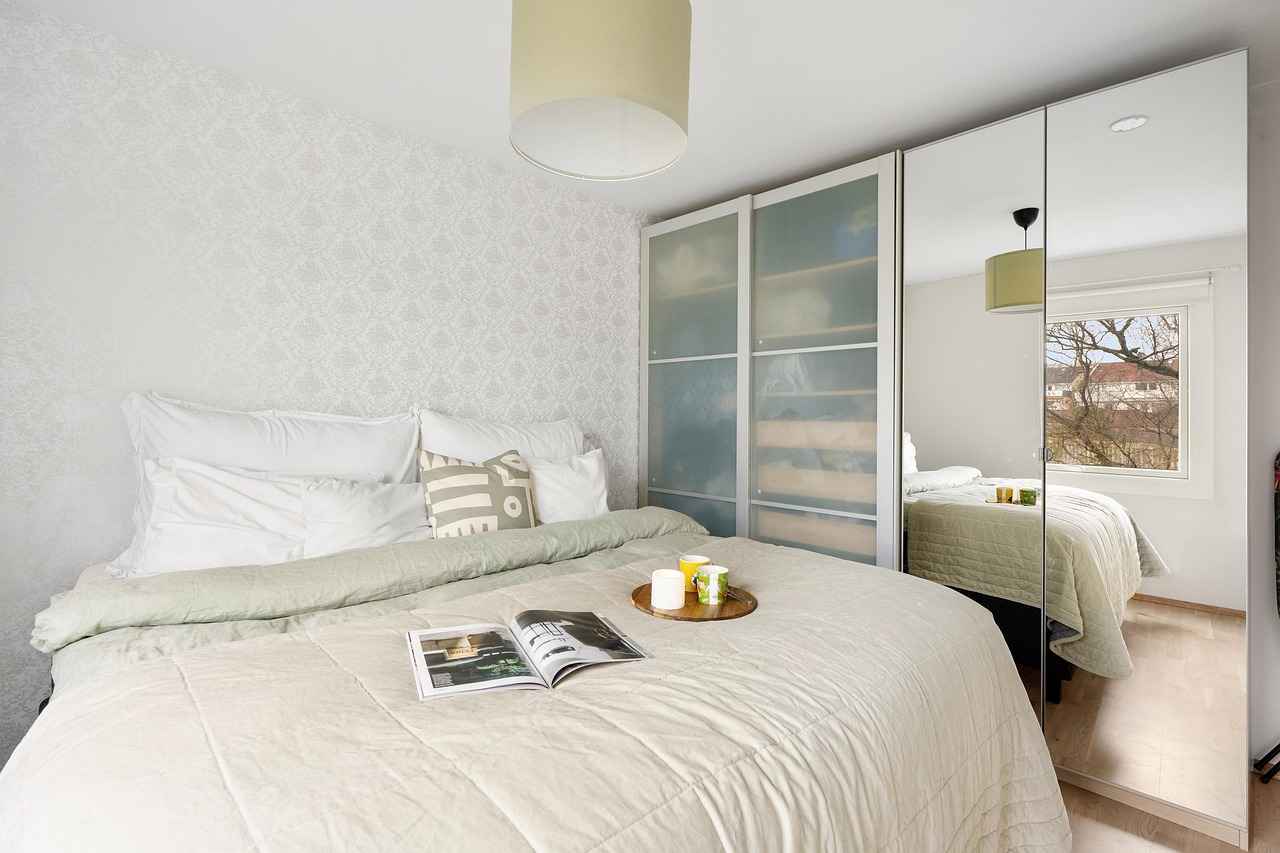
9. Luxurious Fabrics
Luxurious fabrics are increasingly becoming a focal point in modern bed design, as they enhance both comfort and aesthetic appeal. In 2025, the trend of incorporating high-quality materials like silk, velvet, and high-thread-count cotton into bedding is reshaping how we perceive and experience our sleeping spaces.
Silk, known for its softness and luster, adds a touch of elegance to any bedroom. Its natural temperature-regulating properties make it an ideal choice for bedding, ensuring a comfortable sleep throughout the year. Moreover, its hypoallergenic nature makes silk a suitable option for those with sensitive skin.
On the other hand, velvet is making waves due to its rich texture and luxurious appearance. This fabric not only elevates the style of a bed but also provides a cozy feel, making it perfect for upholstered headboards and bed frames. The tactile quality of velvet invites relaxation, creating an inviting atmosphere in the bedroom.
When it comes to sheets and duvet covers, high-thread-count cotton remains a favorite among consumers. The higher the thread count, the softer and more durable the fabric. This quality leads to a more comfortable sleeping experience, promoting better rest and rejuvenation. In addition to comfort, high-thread-count cotton is also breathable, making it a practical choice for all seasons.
| Fabric Type | Benefits |
|---|---|
| Silk | Soft, hypoallergenic, temperature-regulating |
| Velvet | Rich texture, cozy feel, stylish appearance |
| High-Thread-Count Cotton | Soft, durable, breathable |
In conclusion, the choice of fabric plays a crucial role in bed design, influencing not only the visual appeal but also the quality of sleep. By selecting luxurious materials such as silk, velvet, and high-thread-count cotton, homeowners can create a bedroom that is both stylish and comfortable. As we move forward, these fabrics will continue to define luxury in bed design, offering a perfect blend of comfort and elegance.
9.1. Upholstered Beds
Upholstered beds are gaining popularity in modern bedroom design, offering a plush and inviting aesthetic that enhances the overall ambiance of any sleeping space. These beds are not only visually appealing but also provide a range of benefits that contribute to a cozy and sophisticated bedroom environment.
- Comfort and Support: Upholstered beds are typically padded, which adds an extra layer of comfort. The soft fabric can help reduce pressure points, making it easier to relax and enjoy a good night’s sleep.
- Variety of Styles: Available in numerous colors, patterns, and materials, upholstered beds can be tailored to fit any decor style—from traditional to contemporary. This versatility allows homeowners to express their personal taste.
- Sound Absorption: The fabric used in upholstered beds can help dampen noise, creating a quieter and more peaceful sleeping environment. This feature is particularly beneficial in urban settings.
- Customization Options: Many manufacturers offer customizable options, allowing you to choose the fabric, color, and even the bed’s shape. This personalization ensures that your bed fits perfectly within your design scheme.
- Storage Solutions: Some upholstered beds come with built-in storage options, such as drawers or lift-up mechanisms. This functionality is especially useful in smaller bedrooms where space is at a premium.
In conclusion, upholstered beds are an excellent choice for those looking to enhance their bedroom’s comfort and style. With their myriad benefits and design options, they stand out as a top trend in bedroom decor for 2025. By choosing an upholstered bed, you can create a cozy and sophisticated retreat that reflects your unique personality.
9.2. High-Thread-Count Bedding
High-thread-count bedding has become synonymous with luxury and comfort, fundamentally transforming the sleep experience for many. As we delve into the significance of high-thread-count fabrics, we uncover how they contribute to improved sleep quality and overall comfort.
Thread count refers to the number of threads woven together per square inch of fabric. Generally, a higher thread count indicates a softer and more durable material. Bedding with a thread count of 300 to 800 is widely considered optimal, providing a perfect balance between comfort and breathability. But why does this matter?
- Enhanced Softness: High-thread-count sheets are crafted from finer threads, resulting in a smoother texture that feels luxurious against the skin.
- Durability: Fabrics with higher thread counts tend to be more durable, resisting wear and tear over time, which means they last longer than their lower-thread-count counterparts.
- Temperature Regulation: Quality fabrics often possess better moisture-wicking properties, helping to keep you cool in the summer and warm in the winter.
- Hypoallergenic Properties: Many high-thread-count sheets are made from natural materials like cotton or bamboo, which are less likely to irritate sensitive skin.
Moreover, investing in high-thread-count bedding not only enhances your sleep experience but also elevates the aesthetic of your bedroom. The luxurious appearance of finely woven sheets can transform your bed into a stunning focal point, inviting relaxation and tranquility.
In conclusion, choosing high-thread-count bedding is a worthwhile investment for anyone seeking to improve their sleep quality and overall comfort. The blend of softness, durability, and aesthetic appeal makes it a superior choice for creating a restful and inviting sleep environment.
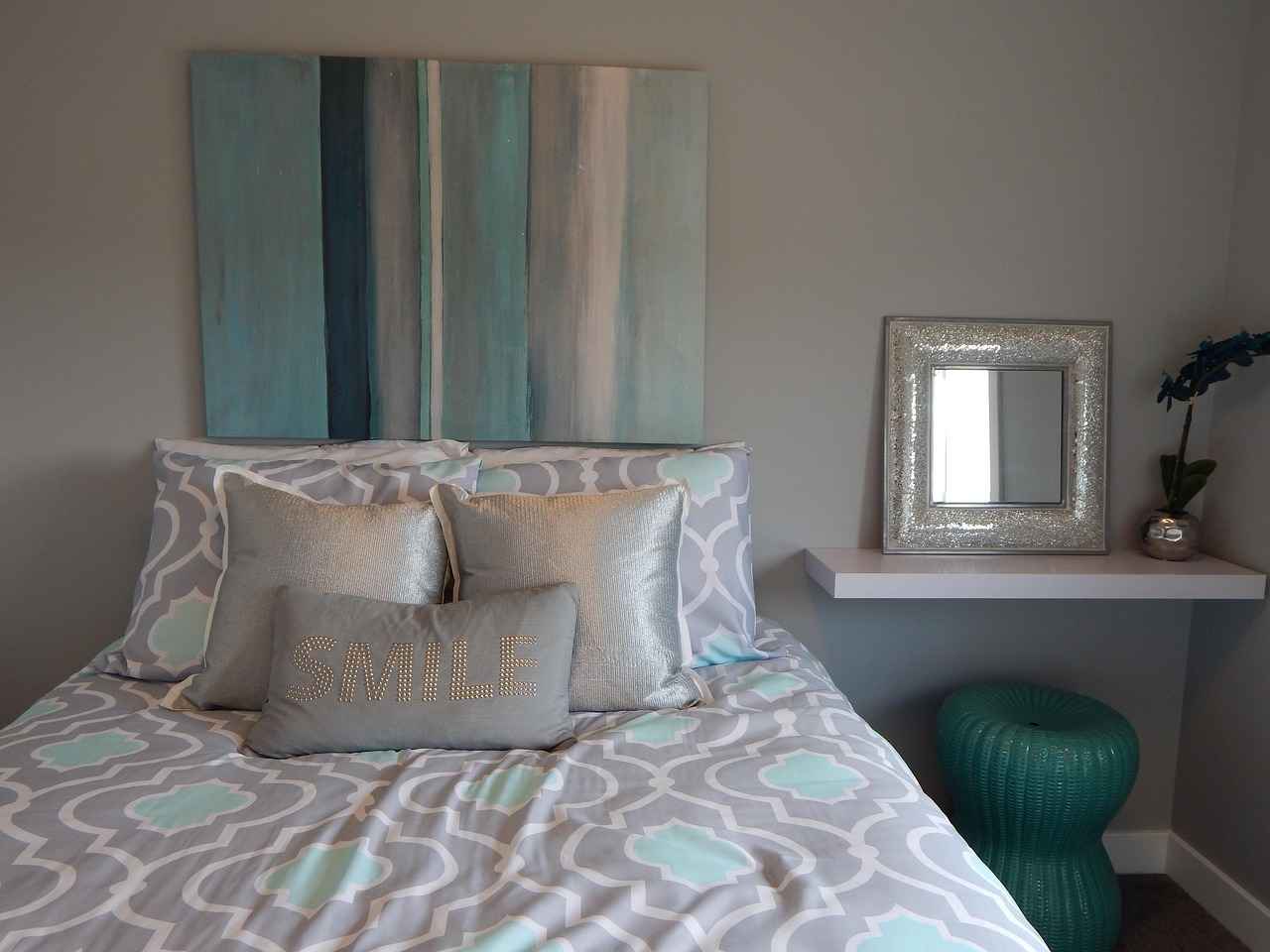
10. Unique Bed Shapes
Unique bed shapes are becoming a significant trend in modern bedroom design, moving beyond traditional rectangular frames to create visually stunning focal points. These innovative forms not only enhance the aesthetic appeal of a room but also contribute to a unique sleeping experience.
As homeowners seek to express their individuality, non-traditional bed shapes are rapidly gaining popularity. This section explores various unique designs and their impact on bedroom ambiance.
- Circular Beds: Circular beds are a bold choice that promotes a sense of intimacy. Their rounded shape encourages a cozy atmosphere, making them perfect for couples. Additionally, they can be a striking centerpiece, drawing attention and admiration.
- Oval Beds: Similar to circular beds, oval beds offer a unique twist. Their elongated shape can create a more spacious feel, fitting seamlessly into larger bedrooms while maintaining a stylish look.
- Canopy Beds: Canopy beds have been reimagined in modern designs, combining elegance with functionality. These beds can transform any bedroom into a luxurious retreat, providing a sense of enclosure and comfort.
- Platform Beds: Low-profile platform beds with unconventional shapes, such as asymmetrical designs, are becoming increasingly popular. These beds emphasize minimalism while offering a modern flair.
- Floating Beds: Floating beds create an illusion of space by elevating the mattress off the ground. This design not only looks contemporary but also makes cleaning easier and enhances the overall aesthetic of the room.
Incorporating these unique bed shapes can significantly enhance the visual appeal of a bedroom. They invite creativity and can be paired with various decor styles, from bohemian to minimalist. By choosing a distinctive bed design, homeowners can express their personality and create a space that feels both inviting and stylish.
As we look to the future, the trend of unique bed shapes is likely to expand, with designers continuously pushing the boundaries of traditional furniture design. Embracing these innovative forms can lead to a more personalized and visually captivating bedroom environment.
10.1. Circular and Oval Beds
Circular and oval beds are making waves in modern bedroom design, serving as a captivating focal point that enhances both aesthetics and functionality. These unique shapes not only stand out visually but also promote a sense of intimacy and comfort, making them an ideal choice for creating a personal sanctuary.
The design of circular and oval beds encourages a more inclusive atmosphere. Unlike traditional rectangular beds, these shapes facilitate conversation and connection, allowing couples or families to gather around the bed comfortably. The absence of sharp corners contributes to a softer, more inviting environment, which can be particularly beneficial in smaller spaces where maximizing comfort is essential.
In addition to their visual appeal, circular and oval beds often come with innovative design features. Many models incorporate adjustable bases or built-in storage solutions, enhancing their practicality without compromising style. This multifunctionality is particularly appealing to those looking to optimize their bedroom space while ensuring it remains cozy and inviting.
- Intimacy and Connection: The rounded shape promotes closer interactions, making it perfect for couples.
- Space Optimization: Ideal for smaller bedrooms, these beds can fit seamlessly into various layouts.
- Innovative Designs: Many circular beds come with features like storage or adjustable bases.
Moreover, the aesthetic versatility of circular and oval beds allows them to complement various interior styles, from modern minimalism to bohemian chic. When paired with the right bedding and decor, these beds can transform any bedroom into a stylish retreat.
In conclusion, circular and oval beds are not just a trend; they represent a shift towards more intimate and functional bedroom design. As we embrace these unique shapes, we are reminded of the importance of comfort, connection, and personal expression in our living spaces.
10.2. Canopy Beds
Canopy beds have long been a symbol of elegance and luxury in bedroom design. These stunning pieces not only provide a cozy and intimate sleeping space but also add a dramatic flair that can transform any room into a luxurious retreat. In 2025, modern interpretations of canopy beds are evolving, incorporating innovative designs and materials that appeal to contemporary tastes.
One of the most exciting trends is the use of lightweight fabrics for the canopies themselves. Sheer materials like chiffon or linen allow natural light to filter through while still providing a sense of privacy and enclosure. This creates a soft, ethereal atmosphere that enhances the overall aesthetic of the bedroom.
Additionally, the frame of the canopy bed is being reimagined with sleek lines and minimalist designs. Gone are the heavy, ornate structures of the past; instead, modern canopies often feature streamlined profiles that complement a variety of decor styles, from Scandinavian minimalism to bohemian chic.
Color plays a crucial role in the appeal of canopy beds. In 2025, expect to see a range of bold colors and unique patterns that make the bed a statement piece. From deep jewel tones to vibrant prints, these beds are designed to stand out and serve as the focal point of the room.
Moreover, many contemporary canopy beds are designed with multifunctionality in mind. Some feature integrated storage solutions or adjustable heights, making them suitable for smaller spaces without sacrificing style. This adaptability is essential in modern homes where space is at a premium.
In conclusion, canopy beds are not just a nostalgic nod to the past; they are evolving into stylish, functional pieces that cater to the needs of the modern homeowner. By blending elegance with practicality, these beds are poised to remain a popular choice for those looking to create a luxurious bedroom retreat.
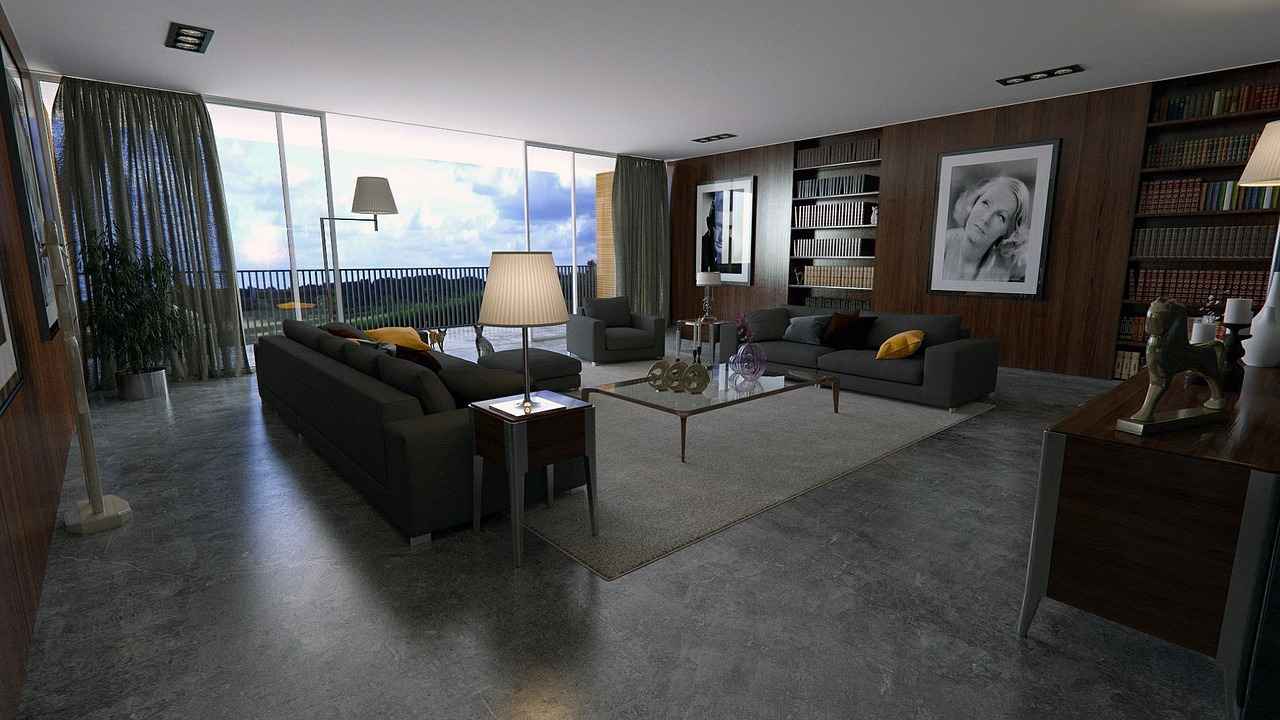
11. Incorporating Nature
Incorporating nature into bedroom design has become a vital trend, especially in the context of biophilic design. This approach emphasizes the connection between indoor spaces and the natural environment, creating a calming and rejuvenating atmosphere that promotes well-being. As we delve into this trend, we will explore various elements that can be integrated into bedroom designs to enhance tranquility and comfort.
| Natural Elements | Benefits |
|---|---|
| Indoor Plants | Improve air quality, reduce stress, and enhance mood. |
| Natural Light | Boosts vitamin D levels, improves sleep quality, and creates a warm ambiance. |
| Natural Materials | Enhances aesthetic appeal and provides a tactile connection to nature. |
Indoor plants are essential for implementing biophilic design. They not only beautify the space but also contribute to improved air quality by filtering toxins and releasing oxygen. Popular choices include snake plants, peace lilies, and pothos, which are known for their low maintenance and air-purifying properties.
Moreover, maximizing natural light is crucial in creating a serene environment. Strategically placing beds near windows can help capture sunlight, which not only brightens the room but also aligns with our natural circadian rhythms, promoting better sleep. Consider using sheer curtains to allow soft light to filter through while maintaining privacy.
Incorporating natural materials in furniture and decor can also enhance the biophilic aspect of a bedroom. Materials like wood, bamboo, and linen provide a sense of warmth and comfort, making the space feel more inviting. Choosing furnishings made from these materials can create a harmonious balance between indoor and outdoor elements.
In conclusion, integrating nature into bedroom design through the use of plants, natural light, and materials can significantly enhance the overall atmosphere. This approach not only promotes relaxation but also fosters a deeper connection to the environment, making your bedroom a sanctuary of peace and rejuvenation.
11.1. Indoor Plants
Indoor plants play a pivotal role in enhancing the aesthetics and atmosphere of any bedroom. They not only add a touch of nature but also contribute significantly to the overall well-being of the inhabitants. In this section, we will explore the benefits of incorporating indoor plants into your bedroom design.
One of the primary advantages of having indoor plants is their ability to improve air quality. Plants such as snake plants, peace lilies, and spider plants are known for their air-purifying properties. They absorb harmful toxins and release oxygen, creating a healthier environment for sleep and relaxation.
Moreover, the presence of greenery has been shown to reduce stress and promote mental well-being. Studies indicate that interacting with plants can lower cortisol levels, helping to create a more tranquil space, which is essential for a restful night’s sleep. The soothing colors and textures of plants can also enhance the visual appeal of the bedroom, making it feel more inviting.
When selecting indoor plants for your bedroom, consider the following:
- Light Requirements: Ensure that the plants you choose can thrive in the natural light available in your bedroom.
- Maintenance: Opt for low-maintenance varieties if you have a busy lifestyle.
- Aesthetic Appeal: Choose plants that complement your bedroom decor.
Incorporating indoor plants into your bedroom not only enhances the biophilic design but also creates a serene and rejuvenating space. As you explore options, remember that each plant brings its unique benefits and charm, contributing to a healthier and more beautiful living environment.
11.2. Natural Light
Maximizing natural light in your bedroom is essential for creating a serene and inviting atmosphere. A well-lit space not only enhances mood but also contributes to overall well-being. In this section, we will explore how bed placement and thoughtful room design can significantly optimize light exposure, resulting in a refreshing ambiance.
To begin with, consider the orientation of your room. Rooms that face east or south typically receive more sunlight throughout the day. Positioning your bed near windows allows for natural light to flood in during the morning, promoting a positive start to your day. Additionally, using light-colored bedding and decor can help reflect this natural light, making the room feel brighter and more spacious.
| Tips for Maximizing Natural Light | Benefits |
|---|---|
| Choose sheer window treatments | Allows light to filter in while maintaining privacy |
| Use mirrors strategically | Reflects light and creates an illusion of space |
| Keep windows clean | Enhances light penetration and clarity |
| Select light-colored furniture | Helps to brighten the overall environment |
Moreover, room design plays a crucial role in light optimization. Open floor plans can facilitate the flow of light throughout the space. Avoid heavy furniture that blocks light pathways; instead, opt for multifunctional pieces that serve both style and utility. Incorporating reflective surfaces such as glass or polished metals can amplify light, creating a more vibrant atmosphere.
In conclusion, by prioritizing natural light through strategic bed placement and thoughtful room design, you can transform your bedroom into a tranquil retreat. Embrace the benefits of a well-lit space to enhance your daily life, promoting relaxation and rejuvenation.
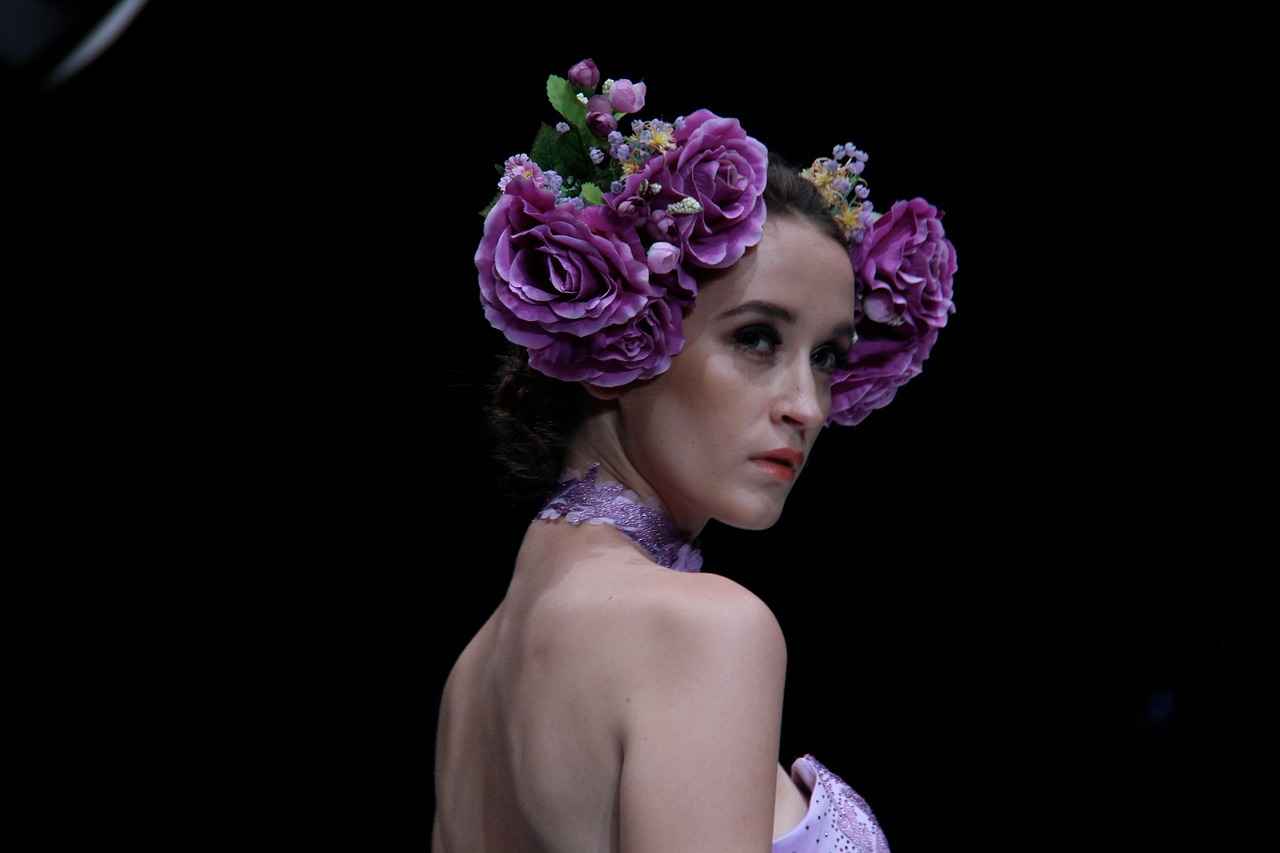
12. Future Trends to Watch
Future Trends in Bed Design: A Look Ahead to 2025
As we move into 2025, the landscape of bed design is evolving rapidly. Innovations in technology, sustainability, and aesthetics are set to redefine how we think about our sleeping spaces. This section dives into the emerging trends that are likely to become mainstream, offering insights into how these developments can enhance our bedrooms.
- Integration of Smart Technology: Smart beds are becoming more sophisticated, featuring integrated technology that tracks sleep patterns, adjusts firmness, and even monitors health metrics. Consumers are increasingly looking for beds that not only provide comfort but also contribute to better sleep quality.
- Eco-Friendly Practices: Sustainability remains a pivotal concern. Expect to see more beds crafted from recycled materials, organic fabrics, and sustainable wood sources. Brands that prioritize eco-friendly practices will resonate with environmentally conscious consumers.
- Personalized Designs: Customization is key. From modular designs that allow for flexibility to personalized bedding options, consumers are seeking ways to express their individuality. This trend emphasizes the importance of creating a space that feels uniquely theirs.
- Biophilic Elements: Incorporating nature into bedroom design is gaining traction. This includes using natural materials, maximizing light exposure, and even adding indoor plants. These elements contribute to a calming environment that promotes relaxation.
- Revival of Vintage Styles: Nostalgia is powerful. Expect to see a resurgence of vintage and retro designs, with modern twists that make them relevant today. Styles like mid-century modern and Art Deco are being reinterpreted to fit contemporary aesthetics.
In conclusion, the future of bed design is bright, with an array of exciting trends on the horizon. By embracing these innovations, consumers can create bedrooms that are not only stylish but also functional and sustainable.
12.1. Virtual Reality Integration
Virtual Reality Integration is set to revolutionize the way we approach bed design and shopping experiences. As technology advances, immersive environments created by virtual reality (VR) are becoming more accessible and impactful in various industries, including home decor.
Imagine stepping into a virtual showroom where you can explore different bed designs, materials, and layouts without leaving your home. This cutting-edge technology allows consumers to visualize how various styles would look in their own bedrooms, enhancing the decision-making process. Additionally, VR can provide a 360-degree view of the bed, allowing potential buyers to examine intricate details and features up close.
Furthermore, virtual reality can help in personalizing bedroom environments. Users could customize their virtual space by selecting colors, textures, and even accessories, creating a unique setup that reflects their personal taste. This level of customization can lead to a more satisfying shopping experience, as customers can see exactly how their choices will come together.
Moreover, VR can facilitate interactive design consultations. Homeowners can collaborate with designers in a virtual space, discussing ideas and making adjustments in real-time. This innovative approach not only saves time but also enhances communication, ensuring that the final design aligns with the homeowner’s vision.
As we look to the future, it’s clear that virtual reality will play a pivotal role in bed design and home decor. By merging technology with creativity, consumers can enjoy a more engaging and personalized shopping experience, ultimately transforming how we select and design our sleeping environments.
In conclusion, the integration of virtual reality in bed design is just the beginning of a new era in home decor. As this technology continues to evolve, it promises to bring even more exciting possibilities for enhancing our living spaces.
12.2. AI-Driven Designs
AI technology is rapidly transforming the landscape of design, particularly in the realm of bedroom furnishings. As we advance into 2025, the integration of artificial intelligence in the design process is becoming increasingly prevalent, enabling manufacturers to create beds that cater to the unique preferences and needs of individual users.
One of the most significant advantages of utilizing AI in bed design is the ability to customize products based on user data. By analyzing factors such as sleep patterns, body types, and personal preferences, AI systems can recommend tailored solutions that enhance comfort and support. This personalized approach not only improves sleep quality but also ensures that each bed aligns with the aesthetic desires of the consumer.
Furthermore, AI-driven designs are paving the way for smart beds equipped with advanced features. These beds can adjust firmness levels, provide sleep tracking, and even offer temperature control, creating an optimal sleeping environment. The incorporation of AI technology allows for real-time adjustments based on the sleeper’s movements and preferences throughout the night, enhancing overall comfort.
In addition to functionality, AI is also influencing the aesthetic aspects of bed design. With algorithms capable of analyzing current trends and consumer preferences, manufacturers can create visually appealing beds that resonate with modern design sensibilities. This leads to a fusion of style and technology, resulting in beds that are not only practical but also serve as statement pieces in any bedroom.
As AI continues to evolve, we can expect to see even more innovative solutions in bed design. The future holds exciting possibilities, from fully customizable beds that adapt to our needs to designs that incorporate sustainable materials, all driven by the insights provided by artificial intelligence.
In conclusion, the integration of AI technology in bed design is revolutionizing how we approach comfort and aesthetics in our sleeping spaces. By harnessing the power of data and technology, manufacturers are setting new standards for personalized and innovative bedroom solutions, making the dream of a perfect night’s sleep more attainable than ever.
Frequently Asked Questions
- What are the top bed design trends for 2025?
The top bed design trends for 2025 include sustainable materials, minimalist aesthetics, bold colors, smart bed technology, and vintage revivals. Each trend focuses on creating a balance between style, comfort, and environmental consciousness.
- How can I incorporate sustainable materials into my bedroom?
You can incorporate sustainable materials by choosing beds made from bamboo, reclaimed wood, or organic fabrics. These eco-friendly options not only look great but also contribute to a healthier planet.
- What is the significance of minimalist aesthetics in bed design?
Minimalist aesthetics emphasize clean lines and simple forms, promoting a serene environment that encourages relaxation. This style is perfect for creating a tranquil bedroom atmosphere.
- Are smart beds worth the investment?
Absolutely! Smart beds offer features like sleep tracking and adjustable firmness, which can significantly improve your sleep quality and overall well-being. They’re a great investment in your health!
- How can I personalize my bed design?
You can personalize your bed design by opting for modular designs that allow flexibility and customization. Additionally, choosing personalized bedding options with unique colors and patterns can make your space truly yours.
- What are some multifunctional bed options for small spaces?
For small spaces, consider Murphy beds, sofa beds, or daybeds. These designs maximize functionality without sacrificing style, making them perfect for urban living.
